2018-04-12 - Nº 154
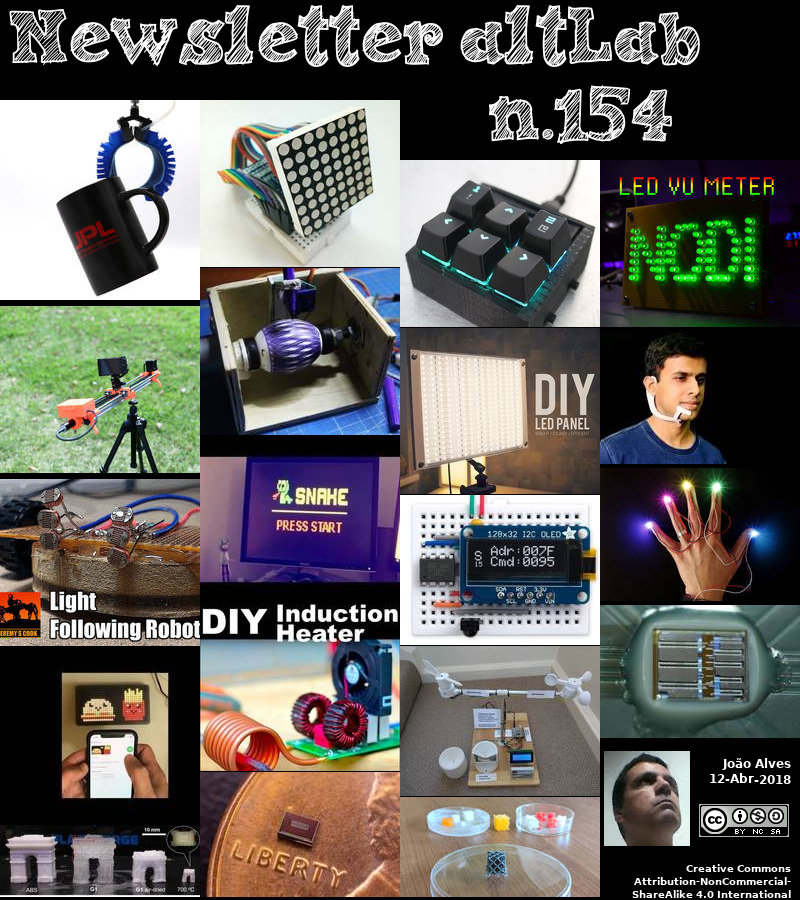
Editorial
Esta é a Newsletter Nº 154 que se apresenta com o mesmo formato que as anteriores. Se gostar da Newsletter partilhe-a!
Todas as Newsletters encontram-se indexadas no link.
Esta Newsletter tem os seguintes tópicos:
Faz anos hoje que nascia, em 1851, Edward Walter Maunder. Este astrónomo inglês que foi o primeiro a fazer o exame da Comissão do Serviço Civil Britânico para o posto de assistente fotográfico e espectroscópio no Royal Observatory, em Greenwich. Nos quarenta anos seguintes em que trabalhou lá, fez extensas medições de manchas solares. Verificando registos históricos, ele encontrou um período de 1645 a 1715 que teve uma notável falta de relatórios sobre manchas solares. Embora ele podia ter questionado a exactidão do relatório, ele atribuiu a escassez de relatórios a uma escassez real de manchas solares durante esse período. Embora a sua sugestão não tenha sido geralmente aceita num primeiro momento, com o acumular de pesquisas indicou que há de fato décadas de duração quando o sol tem notavelmente poucas manchas solares. Esses períodos são agora conhecidos como minima Maunder .
Faz também anos hoje que nascia, em 1852, Ferdinand von Lindemann. Este matemático alemão foi o primeiro a provar que PI é transcendental (não é uma solução de qualquer equação algébrica com coeficientes racionais). Isso finalmente estabeleceu a natureza insolúvel do problema matemático grego clássico de enquadrar o círculo (construindo um quadrado com a mesma área que um dado círculo usando somente régua e compasso.) Em 1873, Lindemann visitou Hermite em Paris e discutiu os métodos que Hermite havia usado. usado em sua prova de que e, a base dos logaritmos naturais, é transcendental. Após essa visita, Lindemann conseguiu estender os resultados de Hermite para mostrar que PI também era transcendental (1882).
Por fim anos hoje que nascia, em 1872, Georges Urbain. Este químico francês foi o primeiro que isolou o lutécio, o último dos materiais raros estáveis. Entre 1895 e 1912 trabalhou materiais raros e realizou mais de 200.000 destilações fraccionadas nas quais separou os elementos samário, európio, gadolínio, térbio, disprósio e hólmio. Em 1907, ele descreveu um processo pelo qual o itérbio de Marignac (1879) poderia ser separado em dois elementos, itérbio (neoytterbium) e lutécio. Ele deu o nome da vila da era romana do que ficava no local de Paris, sua cidade natal ao novo elemento. (Foi descoberto independentemente por von Welsbach mais ou menos na mesma época.) Urbain também descobriu a lei da fosforescência óptima de sistemas binários e escreveu sobre o isomorfismo.
Nesta semana que passou ficámos a saber que foi criada uma nova versão do formato de imagens JPEG. Designado por JPEG XS, as imagens e vídeos mantêm um nível extremamente alto de qualidade graças a um processo de compactação mais simples e rápido - e, portanto, mais eficiente em termos de energia. Os arquivos compactados acabam por ser maiores, mas isso não é um problema graças às redes de banda larga, como Wi-Fi e 5G: o objectivo é transmitir os arquivos em vez de armazená-los em smartphones ou outros dispositivos com memória limitada. Isto vem igualmente resolver o problema que os utilizadores têm com os headsets de realidade virtual que os deixam com náuseas? Um dos motivos é a latência ou a quantidade quase imperceptível de tempo que uma imagem leva para mudar em resposta ao movimento da cabeça de um utilizador. Com este novo padrão de compressão de imagens que poderá resolver esse problema.
Na Newsletter desta semana apresentamos diversos projetos de maker assim como um modelo completo de estação meteorológica para ser impressa em 3D. É apresentada a revista newelectronics de 10 de Abril e alguns livros escritos por Sir Clive Sinclair sobre a temática de transístores. É igualmente apresentado um livro da Analog Devices sobre desenho de Amplificadores para Instrumentação.
 João Alves ([email protected])
João Alves ([email protected])
O conteúdo da Newsletter encontra-se sob a licença  Creative Commons Attribution-NonCommercial-ShareAlike 4.0 International License.
Creative Commons Attribution-NonCommercial-ShareAlike 4.0 International License.
Novidades da Semana
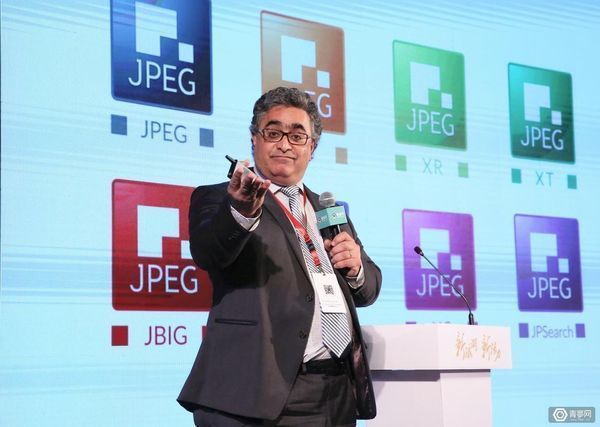
A new JPEG format for virtual reality, drones and self-driving cars
"Why do virtual reality headsets make users nauseous? One reason is latency, or the almost imperceptible amount of time it takes for a display image to change in response to a user’s head movement. However, the Joint Photographic Experts Group (JPEG) has just introduced a new image compression standard that could resolve this problem. This working group is headed by Touradj Ebrahimi, a professor in EPFL’s School of Engineering (STI). With JPEG XS, images and videos maintain an extremely high level of quality thanks to a compression process that is simpler and faster – and thus more energy efficient. The compressed files end up being larger, but that’s not a problem thanks to broadband networks such as Wi-Fi and 5G: the aim is to stream the files instead of storing them in smartphones or other devices with limited memory." [...]
Outras Notícias

VSS Unity First Powered Flight
"We are delighted to report on a major step forward for Virgin Galactic today, as SpaceShipTwo VSS Unity safely and successfully completed her first supersonic, rocket-powered flight. After two years of extensive ground and atmospheric testing, the passing of this milestone marks the start of the final portion of Unity’s flight test program. The flight was also significant for Virgin Galactic’s Mojave based, sister manufacturing organization, The Spaceship Company. Unity is the first vehicle to be built from scratch for Virgin Galactic by The Spaceship Company’s talented team of aerospace engineers and technicians. They were justifiably proud today to be a part of this compelling demonstration of their capabilities in action. VSS Unity benefits from all the data and lessons gathered from the test program of her predecessor vehicle, VSS Enterprise." [...]
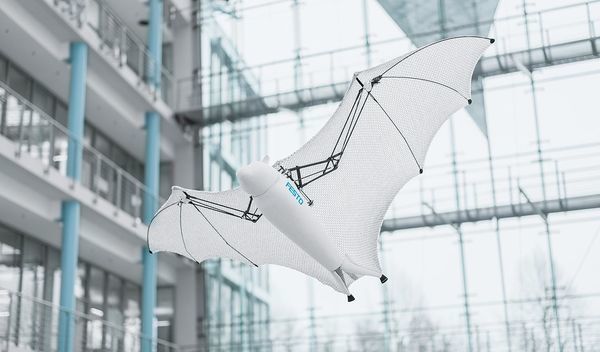
BionicFlyingFox
"For the BionicFlyingFox, our developers from the Bionic Learning Network took a close look at the flying fox and technically implemented its special flying characteristics. Due to the combination of the integrated on-board electronics with an external motion-tracking system, the ultra-lightweight flying object is able to move semi-autonomously in a defined airspace. The flying fox belongs to the order Chiroptera – the only mammals that can actively fly. A particular characteristic is their fine elastic flying membrane that stretches from the extended metacarpal and finger bones down to the foot joints. In flight, the animals control the curvature of the flying membrane with their fingers, allowing them to move aerodynamically and agilely through the air. They thereby achieve maximum uplift, even when performing slow flying manoeuvres." [...]
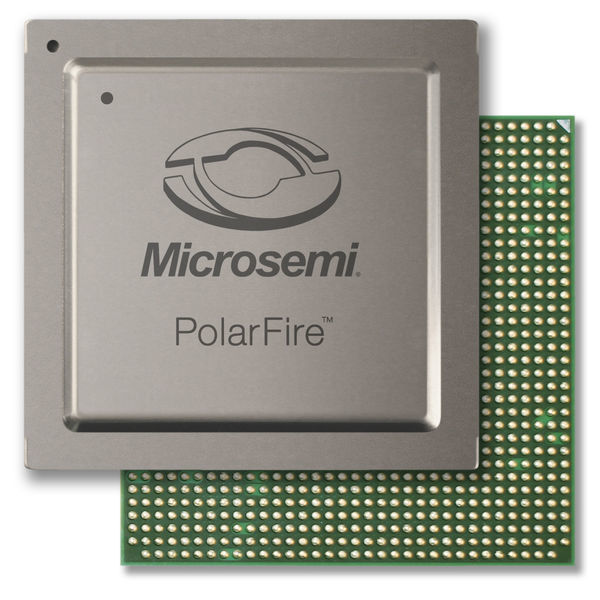
Microsemi Reaches Key Production-Qualification Milestone for its Award-Winning PolarFire FPGA Family
"Microsemi Corporation (Nasdaq: MSCC), a leading provider of semiconductor solutions differentiated by power, security, reliability and performance, today announced its first cost-optimized, low power, mid-range PolarFire™ field programmable gate array (FPGA) device is now production-qualified. With 300K logic elements (LEs), the second largest device in the family targets a variety of applications in the communications, defense, industrial and aviation markets. The company also announced full Libero SoC Design Suite support for PolarFire devices, giving designers the ability to design in any member of the family. PolarFire FPGAs have now been adopted by dozens of customers in key communications, defense and industrial infrastructure market segments, and early access customers are moving into early production qualification with the family. These systems have a substantially lower cost of ownership, as the PolarFire family enables significantly lower power consumption and an ability to operate in harsher thermal environments. "With the first award-winning PolarFire device production-qualified, current customers can now release their end products into the market and new customers can start their PolarFire designs with the assurance they are utilizing an FPGA family that has gone through a robust qualification regimen, completing thousands of man hours of testing and validation," said Suresh Menon, vice president of engineering at Microsemi." [...]

Twenty-four EU countries sign artificial intelligence pact in bid to compete with US & China
"Twenty-four EU countries pledged to band together to form a “European approach” to artificial intelligence in a bid to compete with American and Asian tech giants. Ministers signed a declaration on Tuesday (10 April) saying they will consider putting public research funding into AI, but did not promise a specific amount of dedicated new investments. All EU member states except for Cyprus, Romania, Croatia and Greece vowed to “modernise national policies” as part of an effort to develop large-scale AI research. One Commission official said the four EU countries that did not sign were not opposed to the initiative but might still need formal approval before signing. Norway also signed the declaration. European politicians are scrambling to amp up their work on AI by earmarking public funds and nudging companies to invest in technologies like robotics and medical applications that process huge amounts of data." [...]

NASA's Juno Mission Provides Infrared Tour of Jupiter's North Pole
"Scientists working on NASA's Juno mission to Jupiter shared a 3-D infrared movie depicting densely packed cyclones and anticyclones that permeate the planet's polar regions, and the first detailed view of a dynamo, or engine, powering the magnetic field for any planet beyond Earth. Those are among the items unveiled during the European Geosciences Union General Assembly in Vienna, Austria, on Wednesday, April 11. Juno mission scientists have taken data collected by the spacecraft's Jovian InfraRed Auroral Mapper (JIRAM) instrument and generated the 3-D fly-around of the Jovian world's north pole. Imaging in the infrared part of the spectrum, JIRAM captures light emerging from deep inside Jupiter equally well, night or day. The instrument probes the weather layer down to 30 to 45 miles (50 to 70 kilometers) below Jupiter's cloud tops. The imagery will help the team understand the forces at work in the animation - a north pole dominated by a central cyclone surrounded by eight circumpolar cyclones with diameters ranging from 2,500 to 2,900 miles (4,000 to 4,600 kilometers)." [...]

Mbed OS 5.8.2 released
"We are pleased to announce the Mbed OS 5.8.2 release is now available. This is the latest patch release based on the feature set that Mbed-OS-5.8 introduces. Summary This release adds new target support for RAK811 and Toshiba TMPM46B. We have included a new patch version (4.4.1) of mbed-coap. This brings fixes for the following: Block wise messaging call-backs not working logically Allow TCP+TLS transport method to send larger messages without blockwising. We have also added an update to the drivers for STM32L1: CubeL1: Updated from V1.6.0 to V1.8.1 HAL driver: Updated from V1.2.0 to 1.3.1 CMSIS device: Updated from V2.2.0 to V2.2.3 We have enabled tickless mode on Silicon Labs targets and added support for the v3.0 pin map on the NUMAKER_PFM_M487 platform." [...]
Ciência e Tecnologia

Computer system transcribes words users "speak silently"
"Electrodes on the face and jaw pick up otherwise undetectable neuromuscular signals triggered by internal verbalizations. MIT researchers have developed a computer interface that can transcribe words that the user verbalizes internally but does not actually speak aloud. The system consists of a wearable device and an associated computing system. Electrodes in the device pick up neuromuscular signals in the jaw and face that are triggered by internal verbalizations — saying words “in your head” — but are undetectable to the human eye. The signals are fed to a machine-learning system that has been trained to correlate particular signals with particular words. The device also includes a pair of bone-conduction headphones, which transmit vibrations through the bones of the face to the inner ear." [...]
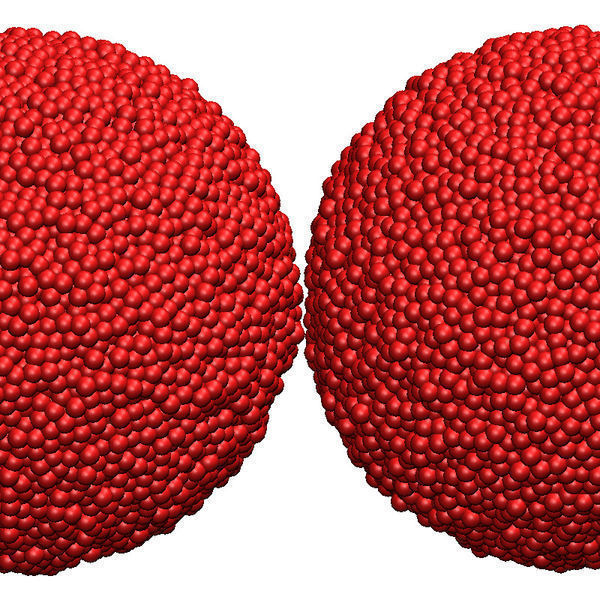
Crash! Scientists explain what happens when nanoparticles collide
"Study results could one day inform the design of new materials for protective gear, energy-harvesting devices and more Helmets that do a better job of preventing concussions and other brain injuries. Earphones that protect people from damaging noises. Devices that convert “junk” energy from airport runway vibrations into usable power. New research on the events that occur when tiny specks of matter called nanoparticles smash into each other could one day inform the development of such technologies. Using supercomputers, scientists led by the University at Buffalo modeled what happens when two nanoparticles collide in a vacuum. The team ran simulations for nanoparticles with three different surface geometries: those that are largely circular (with smooth exteriors); those with crystal facets; and those that possess sharp edges." [...]
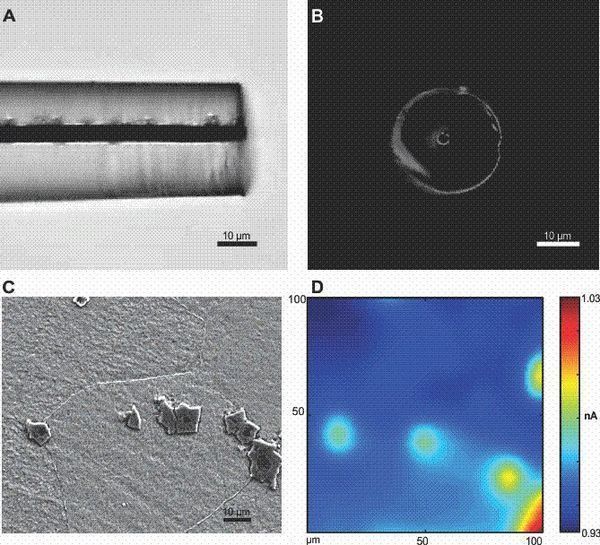
Linking Localized Corrosion of Stainless Steel to Titanium
"McGill University researchers have discovered the consequence of adding titanium and other stabilizing agents to high performing stainless steel on the material’s localized corrosion mechanism. In a study published in npj Materials Degradation, the researchers describe a suite of electrochemical techniques used to characterize the material’s corrosion properties both on the macro and micro scale. Despite the material’s reputation of providing high corrosion resistance, stainless steels are notorious for undergoing localized corrosion- where local breakdown becomes detrimental to the object’s structural integrity due to the formation of pits and crevices that penetrate through the entire metallic object with minimal amount of material lost. Gaining mechanistic insight on how a material will eventually fail over a lab-friendly time scale is thus extremely useful before implementing them in corrosive environments for long-term applications. The work was published in the nature partnered journal, performed by graduate student, Samantha Gateman, and led by the senior author, McGill’s chemistry professor Janine Mauzeroll. It demonstrates the power of pairing microscopy techniques in order to investigate relevant industrial material and will bench mark the characterization methods used in corrosion literature to investigate stainless steel’s corrosion behavior." [...]

Researchers at Purdue, Stanford devise novel ultrafast laser beam steering for autonomous cars that is less complex, uses less power
"Researchers at Purdue University and Stanford University believe they have found a novel laser light sensing technology that is more robust and less expensive than currently available with a wide range of uses, including a way to guide fully autonomous vehicles. The researchers say their innovation is orders of magnitude faster than conventional leading-edge laser beam steering devices that use phased antenna-array technology. The laser beam steering being tested and used by Purdue and Stanford is based on light-matter interaction between a silicon-based metasurface and short light pulses produced for example by a mode-locked laser with a frequency-comb spectrum. Such a beam-steering device can scan a large angle of view in nanoseconds or picoseconds compared with the microseconds current technology takes. “This technology is far less complex and uses less power than existing technologies,” said Amr Shaltout, a post-doctoral research fellow in Materials Science and Engineering at Stanford who conceived the idea for the method. “The technology merges two different fields of nanophotonic metasurfaces and ultrafast optics.” Laser beam steering is a vital technology that can be used in a wide variety of areas including navigation, space flights, radar applications, imaging, tag-scanners, robotics, archaeology, mapping and atmospheric physics." [...]
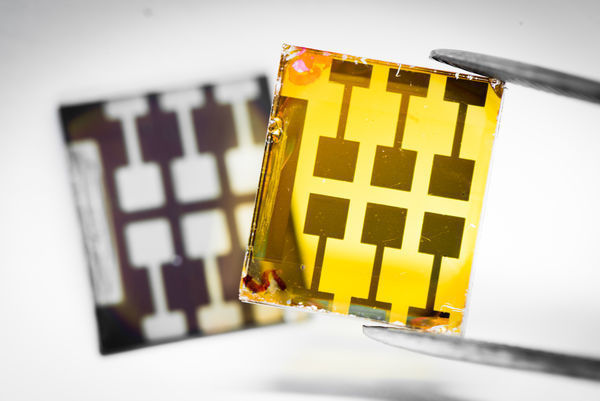
Double perovskites in environmentally friendly solar cells
"A further step has been taken along the road to manufacturing solar cells from lead-free perovskites. High quality films based on double perovskites, which show promising photovoltaic properties, have been developed in collaboration between LiU and NTU in Singapore. Research groups around the world have recognised the potential of perovskites as one of the most promising materials for the development of cheap, environmentally friendly and efficient solar cells. In just a few years, the power conversion efficiency has increased from a few percent to over 22%. The perovskites currently available for use in solar cells, however, contain lead, and Feng Gao, senior lecturer at LiU, was appointed in the autumn of 2017 as Wallenberg Academy Fellow to develop lead-free double perovskites, in which a monovalent metal and a trivalent metal replace the divalent lead. Single-layer films In the laboratory at the Division of Biomolecular and Organic Electronics, LiU, postdoc researchers Weihua Ning and Feng Wang have successfully manufactured single-layer thin films of densely packed crystals of double perovskites." [...]

"Frogs" and "mushrooms" bubble up in quantum fluids
"Quantum fluids may mix in very weird ways, according to new computer simulations of exotic states of matter known as Bose-Einstein condensates (BECs). Far in the future, BECs may enable new kinds of ultra-fast computers. But for now, researchers are just trying to understand the basic physics of how they work. That’s what an Ohio State University visiting scholar in the Department of Physics, Kui-Tian Xi, and his colleagues were doing when they used a supercomputer to simulate what would happen if someone mixed two magnetically polarized BECs. Snapshots from the simulations, published in the journal Physical Review A, resemble ink blot tests that can be interpreted in any number of ways. As one fluid percolated up through the other, Xi first saw the blobs form a turtle (that is, a pattern with six finger-like shapes that looked like a head, tail and four legs, similar to a turtle), then a frog (back legs akimbo) and finally an explosion of mushroom shapes." [...]
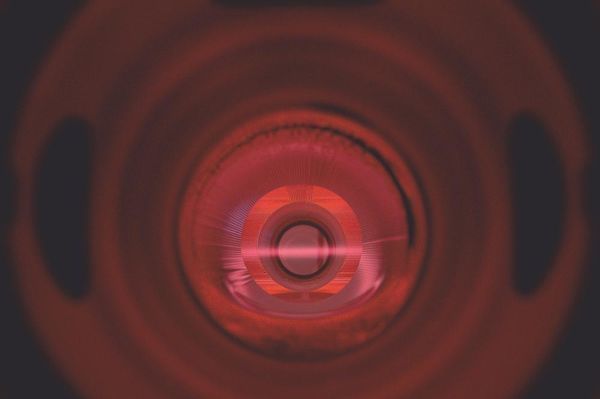
Electron beams that chop themselves
"First experimental proof of self-modulation of particle bunches In a multi-national effort a team of researchers from DESY, the Lawrence Berkeley National Laboratory (LBNL) and other institutes have demonstrated a remarkable feature of self-organisation in a particle beam that can be of great use for a future generation of compact accelerators: Using the high quality electron beam at DESY’s PITZ facility, the scientists could show that long electron bunches can chop themselves into a row of shorter bunches when they fly through a cloud of electrically charged gas, called a plasma. At the same time the electrons' energies were seen to be modulated along each bunch. These results are the experimental proof of a novel plasma acceleration concept pursued by the AWAKE (Advanced Wakefield Experiment) collaboration at the European particle physics lab CERN in Geneva. The team led by DESY scientist Matthias Groß presents its findings in the journal Physical Review Letters. Particle accelerators at the energy frontier like the Large Hadron Collider (LHC) at CERN are extremely costly to build and operate. Nevertheless there is strong interest to increase available beam energies even further to refine the standard model of particle physics and discover physics beyond." [...]

Notre dame researchers developing renewable energy approach for producing ammonia
"Researchers at the University of Notre Dame are developing a renewable energy approach for synthesizing ammonia, an essential component of fertilizers that support the world’s food production needs. The Haber-Bosch process developed in the early 1900s for producing ammonia relies on non-renewable fossil fuels and has limited applications for only large, centralized chemical plants. The new process, published in Nature Catalysis, utilizes a plasma — an ionized gas — in combination with non-noble metal catalysts to generate ammonia at much milder conditions than is possible with Haber-Bosch. The energy in the plasma excites nitrogen molecules, one of the two components that go into making ammonia, allowing them to react more readily on the catalysts. Because the energy for the reaction comes from the plasma rather than high heat and intense pressure, the process can be carried out at small scale. This makes the new process well-suited for use with intermittent renewable energy sources and for distributed ammonia production." [...]
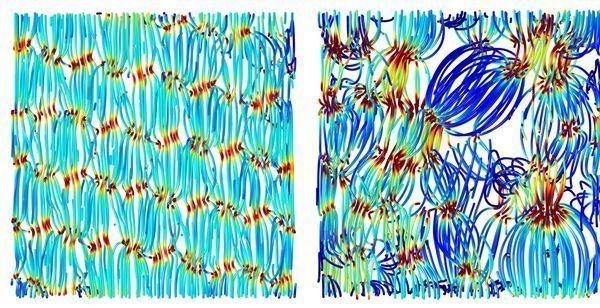
Chaos that will keep you warm: Bayreuth researchers improve heat insulation using deliberate chaos
"Powder is extremely well-suited for thermal insulation when there is a jumble of different sized nanoparticles in it. This was discovered by a research group at the University of Bayreuth led by Prof. Dr. Markus Retsch. The scientists were able to determine how the thermal conductivity of powder is influenced by order and chaos in its constituent parts. They have published their findings in the journal Advanced Materials. The starting point of the research was phototonic crystals that occur naturally in various species of insects. For example, they are responsible for the colourful, glittering appearance of butterflies’ wings." [...]
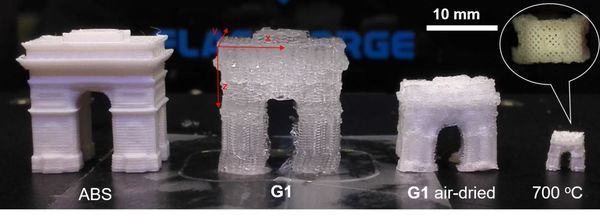
Smart ink adds new dimensions to 3-D printing
"Researchers at Dartmouth College have developed a smart ink that turns 3D-printed structures into objects that can change shape and color. The innovation promises to add even more functionality to 3D printing and could pave the way to a new generation of printed material. The advancement in the area of form-changing intelligent printing - also known as 4D printing - provides a low-cost alternative to printing precision parts for uses in areas ranging from biomedicine to the energy industry. "This technique gives life to 3D-printed objects," said Chenfeng Ke, an assistant professor of chemistry at Dartmouth. "While many 3D-printed structures are just shapes that don't reflect the molecular properties of the material, these inks bring functional molecules to the 3D printing world. We can now print smart objects for a variety of uses."" [...]

How to Cool a Smart Phone: NUST MISIS Scientists Develop Effective Heat Conductors for Electronics
"NUST MISIS scientists have developed composites which conduct heat many times better than their counterparts and are even subject to simple and cheap processing. By using the newly obtained technology in modern electronics it is possible to solve the problem of PCB overheating. The research results were published in the Journal of Alloys and Compounds. Everyone is familiar with the problem of electronics overheating while they work, gadgets “freeze up”, computers automatically restart, etc.—but this is only the visible part of the problem. With regular overheating, a device simply degrades as elevated temperatures are always dangerous for its inner components. Often, overheating is manifested by regular “freezes” after launching the gadget, or worse, by a blue screen (aka the Blue Screen of Death or BSoD) or an unexpected shutdown." [...]
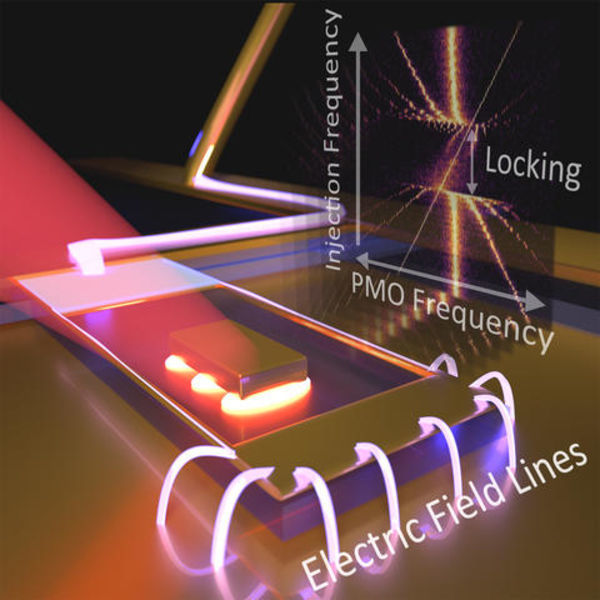
Doing the Nano-Shimmy
"Imagine a single particle, only one-tenth the diameter of a bacterium, whose miniscule jiggles induce sustained vibrations in an entire mechanical device some 50 times larger. By taking clever advantage of the interplay between light, electrons on the surface of metals, and heat, researchers at the National Institute of Standards and Technology (NIST) have for the first time created a plasmomechanical oscillator (PMO), so named because it tightly couples plasmons—the collective oscillations of electrons at the surface of a metal nanoparticle—to the mechanical vibrations of the much larger device it’s embedded in. The entire system, no bigger than a red blood cell, has myriad technological applications. It offers new ways to miniaturize mechanical oscillators, improve communication systems that depend on the modulation of light, dramatically amplify extremely weak mechanical and electrical signals and create exquisitely sensitive sensors for the tiny motions of nanoparticles. NIST researchers Brian Roxworthy and Vladimir Aksyuk described their work (link is external) in a recent issue of Optica. The device consists of a gold nanoparticle, about 100 nanometers in diameter, embedded in a tiny cantilever—a miniature diving board—made of silicon nitride." [...]

High efficiency solar power conversion allowed by a novel composite material
"A composite thin film made of two different inorganic oxide materials significantly improves the performance of solar cells, as recently demonstrated by a joint team of researchers led by Professor Federico Rosei at the Institut national de la recherche scientifique (INRS), and Dr. Riad Nechache from École de technologie supérieure (ÉTS), both in the Montreal Area (Canada). Following an original device concept, Mr. Joyprokash Chakrabartty, the researchers have developed this new composite thin film material which combines two different crystal phases comprising the atomic elements bismuth, manganese, and oxygen. The combination of phases with two different compositions optimizes this material’s ability to absorb solar radiation and transform it into electricity. The results are highly promising for the development of future solar technologies, and also potentially useful in other optoelectronic devices. The results of this research are discussed in an article published in Nature Photonics by researchers and lead author Mr. Joyprokash Chakrabartty. The key discovery consists in the observation that the composite thin film—barely 110 nanometres thick—absorbs a broader portion of the solar spectrum compared to the wavelengths absorbed in the thin films made of the two individual materials." [...]

Two-toned light pattern creates steep quantum walls for atoms
"Exotic physics can happen when quantum particles come together and talk to each other. Understanding such processes is challenging for scientists, because the particle interactions can be hard to glimpse and even harder to control. Moreover, modern computer simulations struggle to make sense of all the intricate dynamics going on in a large group of particles. Luckily, atoms cooled to near zero temperatures can provide insight into this problem. Lasers can make cold atoms mimic the physics seen in other systems—an approach that is familiar terrain for atomic physicists. They regularly use intersecting laser beams to capture atoms in a landscape of rolling hills and valleys called an optical lattice." [...]
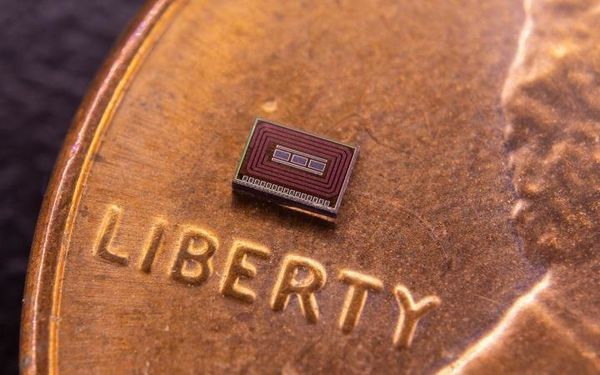
Tiny Injectable Sensor Could Provide Unobtrusive, Long-term Alcohol Monitoring
"Engineers at the University of California San Diego have developed a miniature, ultra-low power injectable biosensor that could be used for continuous, long-term alcohol monitoring. The chip is small enough to be implanted in the body just beneath the surface of the skin and is powered wirelessly by a wearable device, such as a smartwatch or patch. “The ultimate goal of this work is to develop a routine, unobtrusive alcohol and drug monitoring device for patients in substance abuse treatment programs,” said Drew Hall, an electrical engineering professor at the UC San Diego Jacobs School of Engineering who led the project. Hall is also affiliated with the Center for Wireless Communications and the Center for Wearable Sensors, both at UC San Diego. Hall’s team presented this work at the 2018 IEEE Custom Integrated Circuits Conference (CICC) on Apr. 10 in San Diego." [...]

NIST's New Quantum Method Generates Really Random Numbers
"Researchers at the National Institute of Standards and Technology (NIST) have developed a method for generating numbers guaranteed to be random by quantum mechanics. Described in the April 12 issue of (link is external)Nature (link is external), the experimental technique surpasses all previous methods for ensuring the unpredictability of its random numbers and may enhance security and trust in cryptographic systems. The new NIST method generates digital bits (1s and 0s) with photons, or particles of light, using data generated in an improved version of a landmark 2015 NIST physics experiment. That experiment showed conclusively that what Einstein derided as “spooky action at a distance” is real. In the new work, researchers process the spooky output to certify and quantify the randomness available in the data and generate a string of much more random bits. Random numbers are used hundreds of billions of times a day to encrypt data in electronic networks." [...]
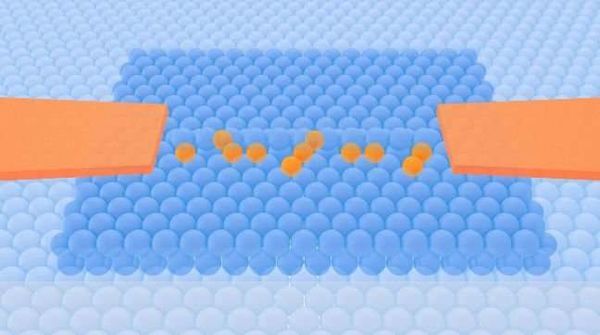
Blazing a Path for Buried Bits in Quantum Chips
"Microscope-guided process for creating quantum bits is widely accessible to smaller labs. NIST researchers have pioneered a process that drastically simplifies fabrication of the kind of nanoscale microchip features that may soon form the basis of a quantum computer, among other applications. Instead of conventional 1-or-0 computer bits stored in the form of electrical charges, quantum information is stored and manipulated in the form of quantum bits (qubits), which can have multiple values simultaneously. One highly promising qubit candidate is a single atom of elements such as phosphorus (P) buried in ultra-pure silicon-28. * These atoms can be precisely placed using a scanning tunneling microscope (STM),** a workhorse laboratory instrument widely available to scientists who may not have access to other complex nanofabrication tools. Using an STM for qubit fabrication requires making electrical connections to the P qubits and wire-like deposits less than 1/100th the width of a human hair." [...]

Rice U. tech will power first fully programmable wireless network
"Rice University researchers will help create the world’s first fully programmable and observable wireless communications network in Salt Lake City as part of a national effort to prepare for a rapidly approaching time when virtually everything will demand wireless data. Rice’s Reconfigurable Ecosystem for Next-gen End-to-end Wireless (RENEW) technology will underlie a city-scale wireless test platform for telecoms, tech companies and research institutions announced today by the University of Utah. The Platform for Open Wireless Data-driven Experimental Research (POWDER) will allow wireless researchers, equipment makers and application developers to conduct tests with up to 40,000 users over a 5-square-mile area that includes much of the University of Utah campus and downtown Salt Lake City. POWDER and a complementary test bed in New York City were announced today as the United States’ first wireless test networks large enough to cover a small U.S. city. They are funded by the National Science Foundation (NSF) and industry consortium partners in NSF’s Platforms for Advanced Wireless Research (PAWR) effort. “The biggest challenge for the future of wireless communications is not data speeds but scalability, in every sense,” said RENEW project leader Ashutosh Sabharwal, professor of electrical and computer engineering at Rice." [...]

Making computer animation more agile, acrobatic - and realistic
"It’s still easy to tell computer-simulated motions from the real thing – on the big screen or in video games, simulated humans and animals often move clumsily, without the rhythm and fluidity of their real-world counterparts. But that’s changing. University of California, Berkeley researchers have now made a major advance in realistic computer animation, using deep reinforcement learning to recreate natural motions, even for acrobatic feats like break dancing and martial arts. The simulated characters can also respond naturally to changes in the environment, such as recovering from tripping or being pelted by projectiles. “This is actually a pretty big leap from what has been done with deep learning and animation. In the past, a lot of work has gone into simulating natural motions, but these physics-based methods tend to be very specialized; they’re not general methods that can handle a large variety of skills,” said UC Berkeley graduate student Xue Bin “Jason” Peng." [...]
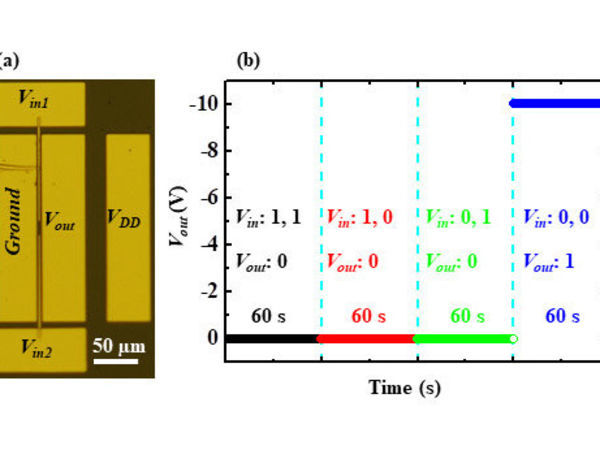
Diamond-Based Circuits Can Take the Heat for Advanced Applications
"When power generators like windmills and solar panels transfer electricity to homes, businesses and the power grid, they lose almost 10 percent of the generated power. To address this problem, scientists are researching new diamond semiconductor circuits to make power conversion systems more efficient. A team of researchers from Japan successfully fabricated a key circuit in power conversion systems using hydrogenated diamond (H-diamond.) Furthermore, they demonstrated that it functions at temperatures as high as 300 degrees Celsius. These circuits can be used in diamond-based electronic devices that are smaller, lighter and more efficient than silicon-based devices. The researchers report their findings this week in Applied Physics Letters, from AIP Publishing." [...]

Gecko-inspired adhesives help soft robotic fingers get a better grip
"A team of California researchers has developed a robotic gripper that combines the adhesive properties of gecko toes and the adaptability of air-powered soft robots to grasp a much wider variety of objects than the state of the art. Researchers will present their findings at the 2018 International Conference on Robotics and Automation May 21 to 25 in Brisbane, Australia. The gripper that the team developed can lift up to 45 lbs. and could be used to grasp objects in a wide range of settings, from factory floors to the International Space Station. Geckos are known as nature’s best climbers because of a sophisticated gripping mechanism on their toes. In previous work, researchers at Stanford University and the Jet Propulsion Laboratory led by Professor Aaron Parness recreated that mechanism with a synthetic material called a gecko-inspired adhesive." [...]
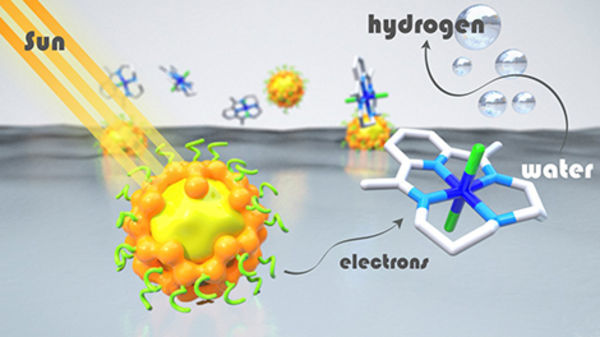
Cheaper, less toxic and recyclable light absorbers for hydrogen production
"Mimicking photosynthesis in plants, using light to convert stable and abundant molecules like water and CO2 into a high energy fuel (hydrogen) or into chemicals of industrial interest, is a major research challenge today. However, achieving artificial photosynthesis in solution remains limited by the use of costly and toxic metal-based compounds to harvest light. Researchers at CNRS, CEA and the Université Grenoble Alpes propose an efficient alternative using semi-conductor nanocrystals (also called quantum dots) based on cheaper and less toxic elements, such as copper, indium and sulfur. Their work was published in Energy & Environmental Science on 10 April 2018. In artificial photosynthesis systems chromophores, or “photosensitizers”, absorb light energy and transfer electrons to the catalyst, which activates the chemical reaction. Although much progress has been made in recent years in the development of catalysts devoid of noble metals, photosensitizers still rely, in the main, on molecular compounds containing rare and costly metals, such as ruthenium and iridium, or on inorganic semiconductor materials containing cadmium, a toxic metal." [...]

Artificial intelligence in action
"At the MIT-IBM Watson AI Lab, researchers are training computers to recognize dynamic events. A person watching videos that show things opening — a door, a book, curtains, a blooming flower, a yawning dog — easily understands the same type of action is depicted in each clip. “Computer models fail miserably to identify these things. How do humans do it so effortlessly?” asks Dan Gutfreund, a principal investigator at the MIT-IBM Watson AI Laboratory and a staff member at IBM Research. “We process information as it happens in space and time. How can we teach computer models to do that?” Such are the big questions behind one of the new projects underway at the MIT-IBM Watson AI Laboratory, a collaboration for research on the frontiers of artificial intelligence." [...]
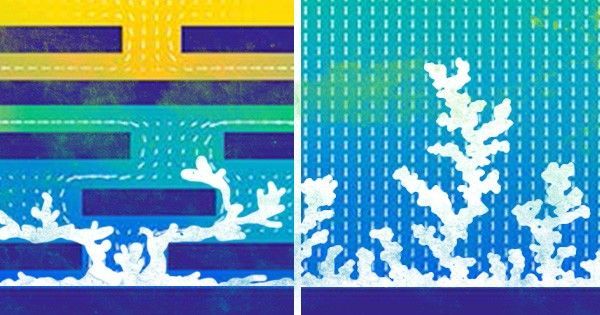
Discovery could make ultra-powerful batteries safer, more efficient
"Mechanical Engineering Professor Bingqing Wei leads team to curb formation of harmful dendrites in lithium metal batteries From smartphones to electric vehicles, many of today’s technologies run on lithium ion batteries. That means that consumers have to keep their chargers handy. An iPhone X battery only lasts for 21 hours of talk time, and Tesla’s model S has a 335-mile range—which means you could expect to make it from Newark, Delaware to Providence, Rhode Island, but not all the way to Boston, on one charge. Scientists all over the world—including even the inventor of lithium ion batteries himself, John Goodenough—are looking for ways to make rechargeable batteries safer, lighter, and more powerful. Now, an international team of researchers led by Bingqing Wei, a professor of mechanical engineering at the University of Delaware and the director of the Center for Fuel Cells and Batteries, is doing work that could lay the foundation for more widespread use of lithium metal batteries, which have more capacity than the lithium ion batteries commonly used in consumer electronics today. The team developed a method to mitigate dendrite formation in lithium metal batteries, which they have described in a paper published in Nano Letters." [...]
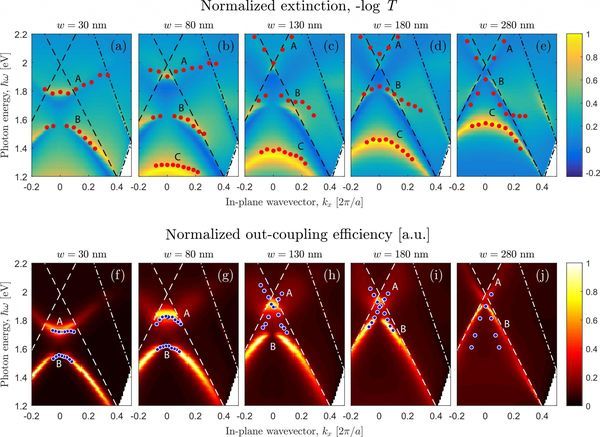
Gold changes the photoluminescence of silicon quantum dots
"A group of scientists from Russia and Sweden have demonstrated that applying gold stripes to a sample with silicon quantum dots modifies the dots’ properties. Their results of the study were published in Scientific Reports. Silicon quantum dots have a wealth of potential applications in cell biology and medicine thanks to their selective cell penetration capability and luminescence. Biosensors based on silicon quantum dots can be used as an early diagnosis tool for various diseases, while silicon nanocrystals hold great potential for developing silicon-based light-emitting devices and producing highly efficient solar cells. Scientists from the theoretical nanophotonics team led by Skoltech Professor Nikolay Gippius jointly with researchers from Moscow State University and the Royal Institute of Technology (KTH) in Stockholm demonstrated, first theoretically and then experimentally, that gold nanostripes are capable of changing the extinction and photoluminescence spectra of silicon nanocrystals. They established that the nanostripe width also affects the optical properties of the quantum dots." [...]
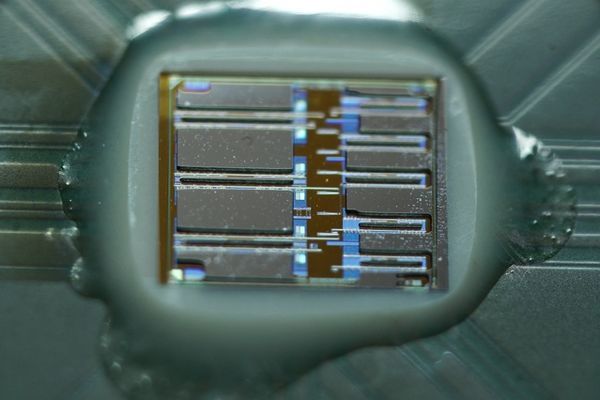
Photonic communication comes to computer chips
"Startup’s optoelectronic chips could reduce energy usage by up to 50 percent in data centers while increasing computing speeds. With novel optoelectronic chips and a new partnership with a top silicon-chip manufacturer, MIT spinout Ayar Labs aims to increase speed and reduce energy consumption in computing, starting with data centers. Backed by years of research at MIT and elsewhere, Ayar has developed chips that move data around with light but compute electronically. The unique design integrates speedy, efficient optical communications — with components that transmit data using light waves — into traditional computer chips, replacing less efficient copper wires. According to the startup, the chips can reduce energy usage by about 95 percent in chip-to-chip communications and increase bandwidth tenfold over their copper-based counterparts. In massive data centers — Ayar’s first target application — run by tech giants such as Facebook and Amazon, the chips could cut total energy usage by 30 to 50 percent, says CEO Alex Wright-Gladstein MBA ’15." [...]

"Waste Heat" Can Be Converted Into Electricity, Research Finds
"Harnessing a phenomenon called the Rashba spin-Seebeck effect will enable commercial devices to turn waste heat from computers, cars, and solar cells into electricity Mechanical engineers at the University of California, Riverside, have reported success in using inexpensive materials to produce thermoelectric devices that transform low-level waste heat into electricity. Their advance could enable a wide variety of commercial applications. For example, integrating thermoelectric generating devices into computer chips could enable the heat they produce to provide a power source. Waste heat from automobile engines could run a car’s electronics and provide cooling. Photovoltaic solar cells could be made more efficient by harnessing the heat from sunlight striking them to generate more electricity. Also, using the same basic technology, economical thermoelectric refrigerators could be produced that would be more energy efficient and with fewer moving parts than refrigerators that use compressors and coolant." [...]
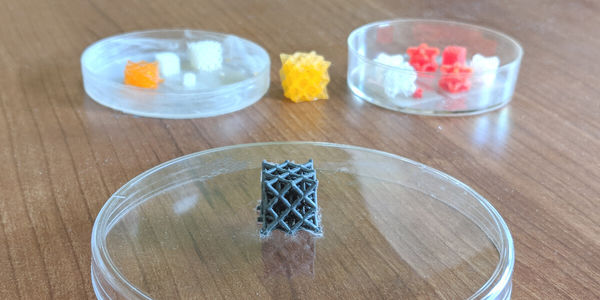
3-D printed active metamaterials for sound and vibration control
"A team led by USC Viterbi researchers developed 3-D printed acoustic metamaterials that can be switched on and off remotely using a magnetic field Researchers have been pushing the capabilities of materials by carefully designing precise structures that exhibit abnormal properties that can control acoustic or optical waves. However, these metamaterials are constructed in fixed geometries, meaning their unique abilities are always fixed. Now, new 3-D printed metamaterial developed by a team led by USC Viterbi researchers can be remotely switched between active control and passive states. USC Viterbi Assistant Professor Qiming Wang and Ph.D. student Kun-Hao Yu, along with MIT Professor Nicholas Fang and University of Missouri Professor Guoliang Huang, have developed 3-D printed metamaterials capable of blocking sound waves and mechanical vibrations. Unlike current metamaterials, these can be turned on or off remotely using a magnetic field. Their materials can be used for noise cancellation, vibration control and sonic cloaking, which can be used to hide objects from acoustic waves." [...]

Seeing How Next-Generation Batteries Power-Up
"Scientists directly see how the atoms in a magnesium-based battery fit into the structure of electrodes. The Science Next-generation batteries based on magnesium rather than lithium ions hold promise to be more efficient, safer, and cheaper. One electrode is metallic magnesium. During discharge, magnesium moves from this electrode to the positive electrode (cathode). But where does the magnesium go when it enters the cathode? Using sophisticated electron microscopy, scientists could see these atoms—even at low concentrations." [...]
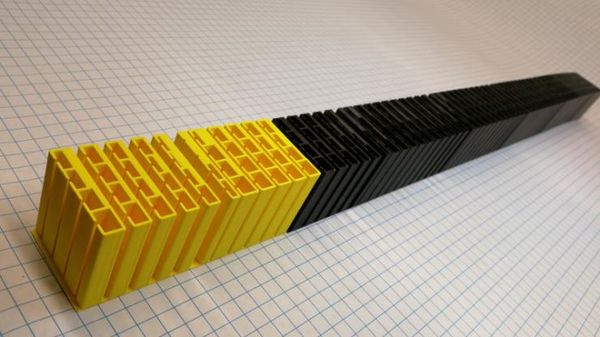
Thin Engineered Material Perfectly Redirects and Reflects Sound
"Metamaterial device controls transmission and reflection of acoustic waves Metamaterials researchers at Duke University have demonstrated the design and construction of a thin material that can control the redirection and reflection of sound waves with almost perfect efficiency. While many theoretical approaches to engineer such a device have been proposed, they have struggled to simultaneously control both the transmission and reflection of sound in exactly the desired manner, and none have been experimentally demonstrated. The new design is the first to demonstrate complete, near-perfect control of sound waves and is quickly and easily fabricated using 3-D printers. The results appear online April 9 in Nature Communications. “Controlling the transmission and reflection of sound waves this way was a theoretical concept that did not have a path to implementation—nobody knew how to design a practical structure using these ideas,” said Steve Cummer, professor of electrical and computer engineering at Duke. “We solved both of those problems." [...]
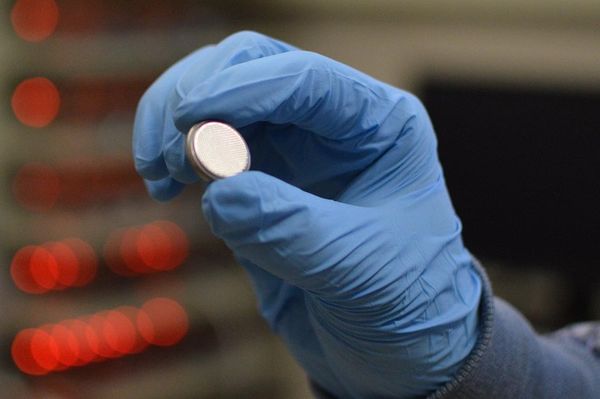
New sodium-ion electrolyte may find use in solid-state batteries
"A newly discovered structure of a sodium-based material allows the materials to be used as an electrolyte in solid-state batteries, according to researchers from Penn State and Pacific Northwest National Laboratory (PNNL). The team is fine-tuning the material using an iterative design approach that they hope will shave years off the time from research to everyday use. The electrolyte, one of three main parts of a battery, is responsible for transferring charged ions in a solid-state battery. This creates an electrical current once the other two parts of the battery, the anode and cathode, are connected in a circuit. Most rechargeable batteries in smart-phones, computers and other consumer electronics use a liquid, lithium-based electrolyte. "Liquid electrolytes have safety issues because they are flammable," said Donghai Wang, associate professor of mechanical engineering, Penn State." [...]

Solar cells enable self-powered camera
"Solar cells convert light to electricity. Image sensors also convert light to electricity. If you could do them both at the same time in the same chip, you’d have the makings of a self-powered camera. Engineers at University of Michigan have recently come up with just that, an image sensor that does both things well enough to capture 15 images per second powered only by the daylight falling on it. With such an energy harvesting imager integrated with and powering a tiny processor and wireless transceiver you could “put a small camera, almost invisible, anywhere,” says Euisik Yoon, the professor of electrical engineering and computer science at University of Michigan who led its development. They reported their results this week in IEEE Electron Device Letters." [...]
Modelos 3D
Com a disponibilidade de ferramentas que permitem dar azo a nossa imaginação na criação de peças 3D e espaços como o thingiverse para as publicar, esta rubrica apresenta alguns modelos selecionados que poderão ser úteis.
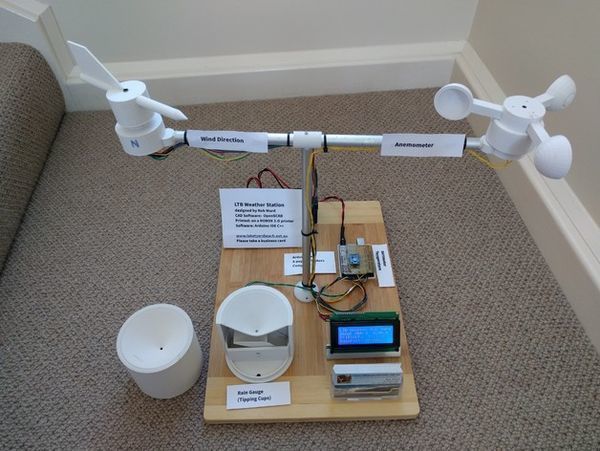
LTB Weather Station
"Weather Stations are a very useful devices, and as we increase our knowledge of the global weather, quantifying our own local experience is also popular. Integrating aspects of the weather to IoT is increasingly important. This project does not invent anything much new, but should give a working set of plans for a weather enthusiast to build their own station. The design is somewhat double-brick out-house in most places and has not been designed for hi-res printing with wafer thin walls. However it will produce a robust system that people may like to refine themselves. The OpenSCAD files are provided to allow people to customise the designs." [...]
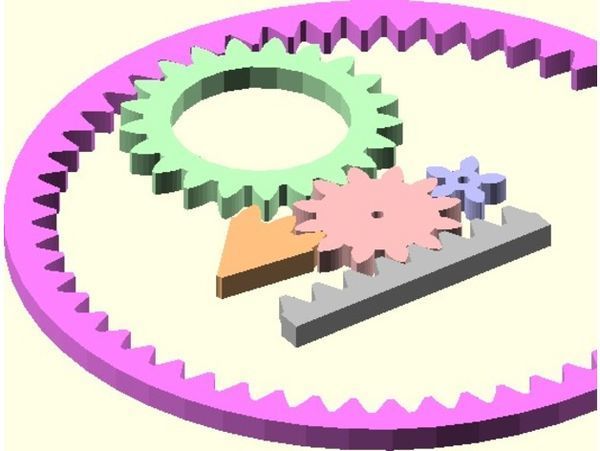
Public Domain Involute Parameterized Gears: Powered Up
"This is an update to the Public Domain involute Gears library by @3dexplorer, with optimisations by @zkarcher. This library provides a module called gear(), which makes ordinary gears, helical gears (twisted like a screw), inner gears (teeth on the inside), and partial gears (a wedge rather than a full disk). It also provides a module called rack(), which creates a bar with teeth that will mesh with the gears (also optionally helical gears), so you can generate a rack and pinion set. The SCAD file also includes an example gear train. If you use the View/Animate command in OpenSCAD, you can see the gears and rack mesh and rotate together. If you change the number of teeth, the animation still rotates correctly." [...]
Documentação
A documentação é parte essencial do processo de aprendizagem e a Internet além de artigos interessantes de explorar também tem alguma documentação em formato PDF interessante de ler. Todos os links aqui apresentados são para conteúdo disponibilizado livremente pelo editor do livro.
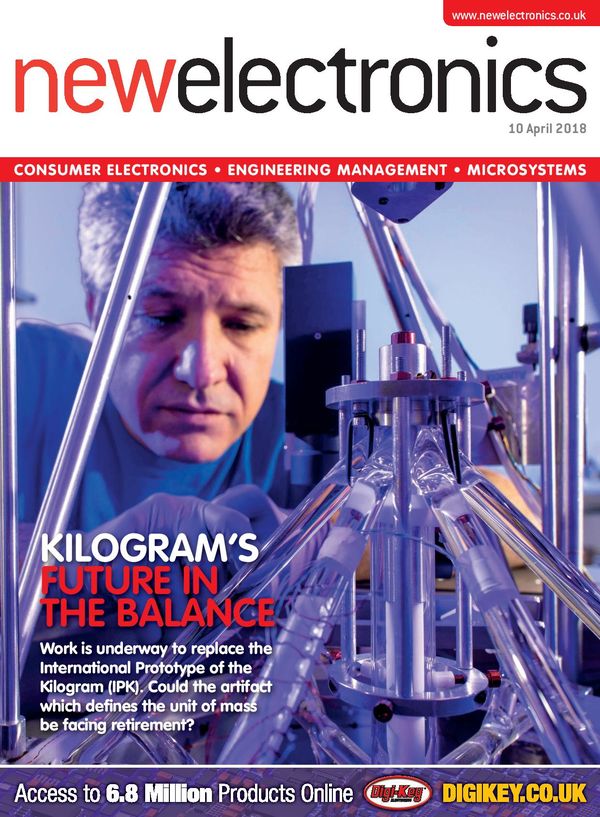
newelectronics 10 de Abril 2018
"New Electronics is a fortnightly magazine focusing on technological innovation, news and the latest developments in the electronics sector. Downloadable as a digital page turner or pdf file, or offered as a hard copy, the New Electronics magazine is available in a format to suit you. " [...]

A Designer’s Guide to Instrumentation Amplifiers
"Instrumentation amplifiers (in-amps) are sometimes misunderstood. Not all amplifiers used in instrumentation applications are instrumentation amplifiers, and by no means are all in-amps used only in instrumentation applications. In-amps are used in many applications, from motor control to data acquisition to automotive. The intent of this guide is to explain the fundamentals of what an instrumentation amplifier is, how it operates, and how and where to use it. In addition, several different categories of instrumentation amplifiers are addressed in this guide. " [...]
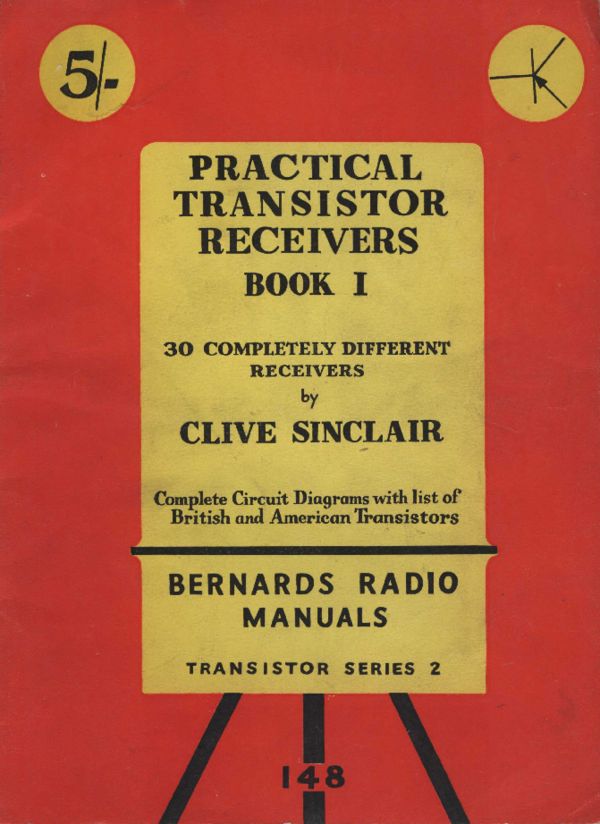
Practical Transistor Receivers Book I
"30 Completely Different Receivers by Clive Sinclar. This book is the second in a new series, devoted entirely to the use of transistors. In the near future we will be publishing further books in this series dealing with audio amplifiers, transmitters, hearing aids, radio control, F.M. receivers, television sets, sub-miniature radio sets, etc. All using transistors. " [...]

Moderm Transistor Circuits for Beginners
"About a dozen different types of component are used in the circuits contained in this book and in other transistor circuits. Each type of component has its own symbol and the meaning of these svmbols must be understood before a circuit diagram can be properly interpreted. Circuit diagrams are merely intended to show what components are used in a piece of electronic equipment and the way in which they are connected. They do not show what physical position each component has in the equipment. It would be possible to use drawings of the individual components in such a diagram and this is sometimes done but it becomes far too clumsy a method where complex circuits are concerned, Some of the earlier circuits in this book have both circuit diagrams (those usrng symbols) and wiring diagrams (those using actual illustrations of the components). These should enable the constructor to gain a knowledge of the circuit as a whole." [...]

Transistor Circuits Manual No. 4
"The rapidity with which new components have appeared on the home constructor-market in recent months has been pleasantly surprising. It seems that,manufacturers are beginning to take new interest in this outlet for their products. In the field of transistors a new drift type has been made available, the OC169. This unit has the same parameters as the OC170 but sells for only 18/0d. which makes if far less of a luxury article. As its characteristics are extremely good it may be used in a great many applications that might surprise someone unfamiliar with them." [...]
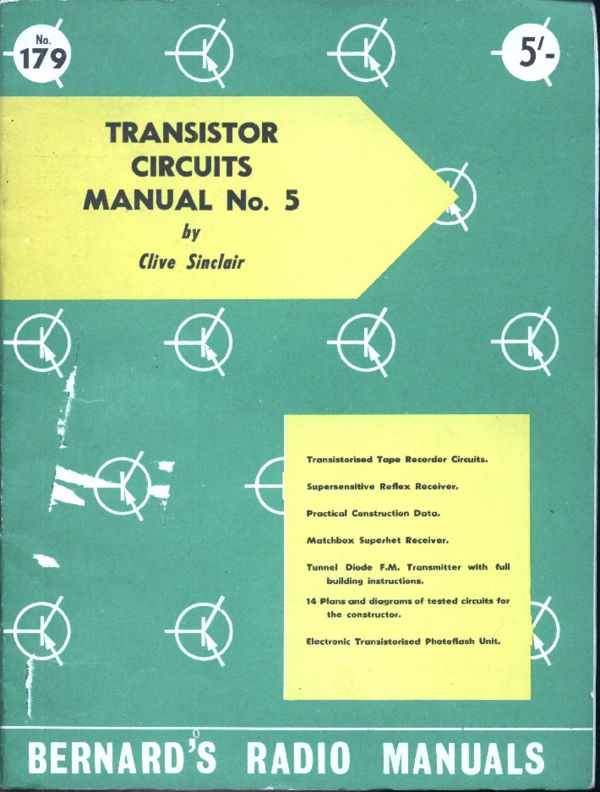
Transistor Circuits Manual No. 5
"The transistor circuits manual series has proved so popular that in this, the fifth in the series, the page size has been doubled. This makes it possible to give larger and clearer circuit diagrams than before and it also means that only the very largest circuits have to be split into two parts. The circuits included in this edition are those which readers asked for most in their letters. A large part of the book is devoted to tape recorder circuitry since this is a field now ripe for transistorisation. The circuit for a complete record /playback amplifier is included which will give a performance quite up to professional standards unlike most of the transistor tape recorders on the market at the moment. The amplifier was designed by G.E.C." [...]
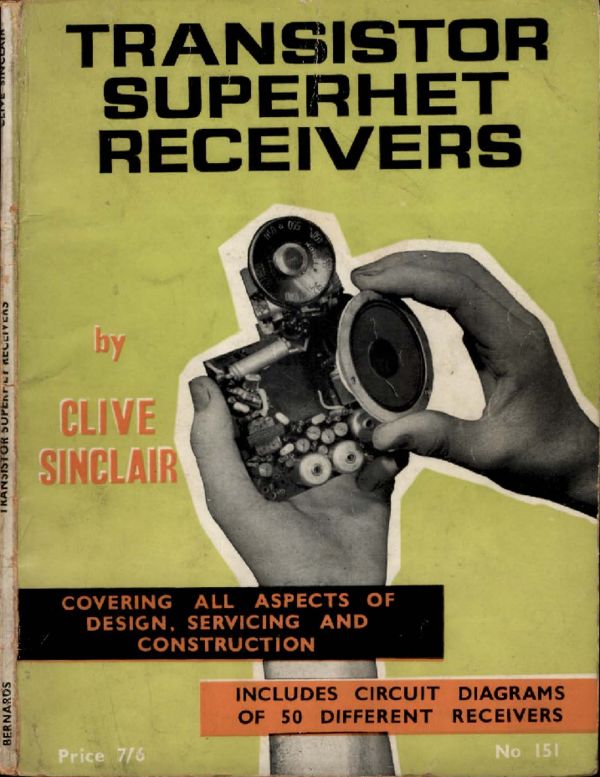
The Transistor Superhet
"Of all the many types of receivers that have been designed the super net, invented by Arm- strong in 1918, is almost the only type in common commercial use today. This applies as much to transistors as it does to valves. There are several excellent reasons for this unique state of affairs. First of all, the well designed superhet has better sensitivity and selectivity than any other type, furthermore the quality is also first class. Secondly, however many stages of pre-demodulation amplification may be used, only two variably tuned stages are necessary. The disadvantages are mainly difficulty of align- ment and fairly high cost." [...]

Transistor Audio Amplifier Manual
"In Book I of " practical Transistor Audio Amplifiers " .I dealt with the basic principles lnvolved rn transistor A.F. amplifier desien ind the practical examples given w&e maintv limiteO to slngle stages. In this second book the-situation rs reversed and all tbe space is devoted to practical applifier circuits employing all the princi^ples and rcleas already described. Most of the circuits may be built as they stand but in a few cases the transistors required are not yet available. These last mentioned circuits have -been included- however, for the sake of completeness and so that the book will not be out of date for a long while to come. .Because the Tnge-of lmnJifie1 sizes used is very wide, from a few hundred microwatts to manv watts, the book has been divided into sections classified according to the power of the amplifiers described." [...]

Transistor Subminiature Receivers Handbook for the Home Constructor
"The increasing complexity of electronic equipment has forced manufacturers to concentrate on reducing the size of their components without any reduction in performance. Miniaturization has been achieved not only by using smaller versions of standard components but also by the invention and discovery of the new types of components and new assembly methods. Foremost amongst the hundreds of new components is, of course, the transistor which not only reduces the size and power requirements of equipment but at the same time gave a tremendous boost to the research in semiconductors as a whole. This research has resulted in semiconductor switches, transformers, power rectifiers, voltage controlled variable capacitors and newer and better types of amplifier. Most of these components have yet to be exploited to any large degree but many of them show tremendous promise. especially in the fields of higher power and higher frequency devices where the transistor has limitations." [...]
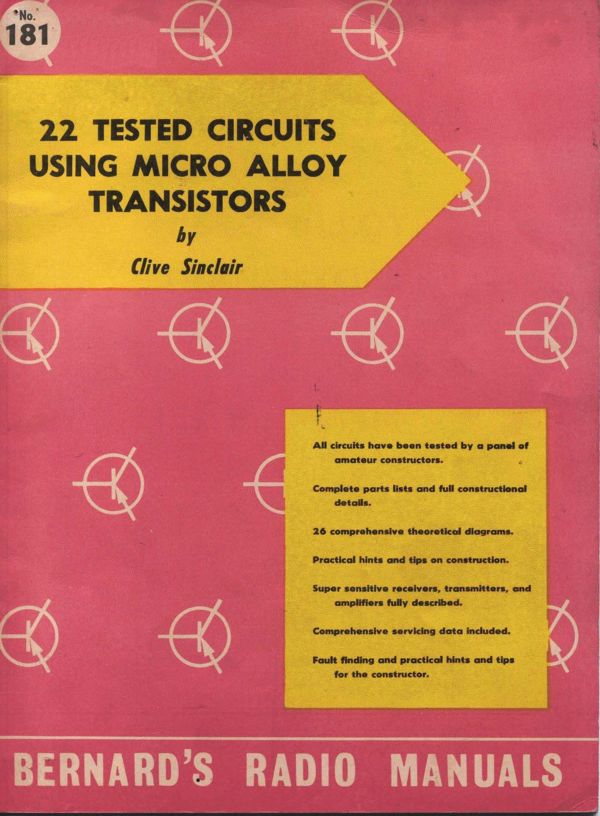
22 Tested Circuits Using Micro Alloy Transistors
"Since the initial invention of the point contact transistor some twelve years ago engineers have continually striven to develop new types with improved performance. The original point contact transistors were very noisy, rather deli- cate and it was very difficult to produce consistently good quality types. When the alloy junction transistor was invented, therefore, they rapidly became obsolete. Alloy junction transistors, such as the 0071 and 0C44, make excellent A.F. amplifiers with comparatively low noise figures and R.F. types may be used at frequencies of up to about 5Mc /s." [...]

Eleven Tested Transistor Circuits using Prefabricated Circuit Units
"The recent introduction of pre-assembled transistor units on the home constructor market has prompted me to devote this issue of the transistor circuits manual to their application in several different projects. The units are made by Gorier in Germany and achieve a level of performance and compactness which is hard, if not impossible, for the home constructor to achieve. By using them he is able to build far more advanced and complicated pieces of equipment than would otherwise be feasible and at the same time he is able to save himself money because buying these units ready made is, surprisingly enough, cheaper than building them oneself. Home constructors are not, however, deprived of the pleasure of the construction side; they are merely given a wider dimension in which to work and satisfactory results are ensured with every project. The main part of this manual is devoted to a receiver of very advanced design which covers the complete shortwave bands from 5.9 to 13 me/s as well as the usual medium and long-wave bands and gives a power output of one watt making it suitable for use as a car or table radio as well as a portable. This considerable increase in output power over that of the normal portable is coupled with a parallel improvement in quality of reproduction because the amplifier part of the circuit has a frequency response of 60 c/s to 16 Kc/s and is therefore suitable for use as a high quality gramophone amplifier." [...]
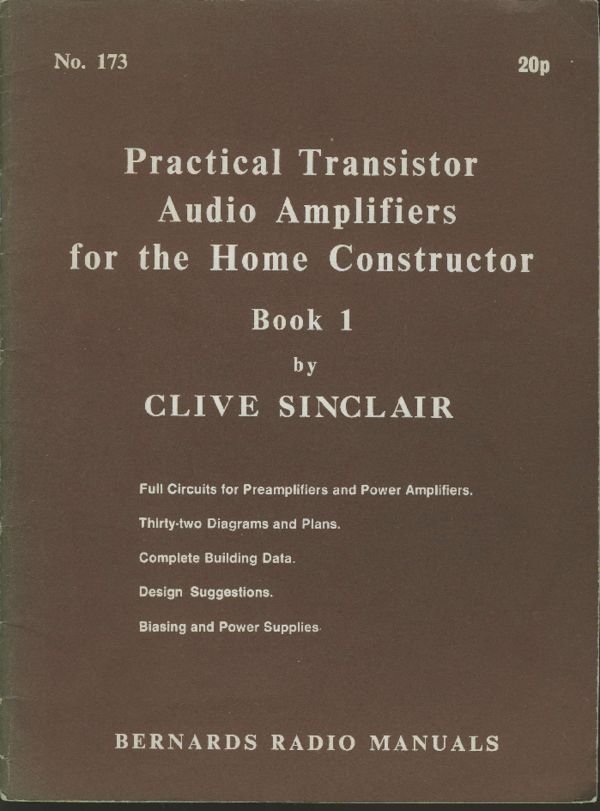
Practical Transistor Audio Amplifiers for the Home Constructor
"A transistor has to be supplied with the correct power if it is to operate efficiently and provide maximum gain with minimum distortion. Since the parameters of a transistor vary with temperature and tune the power supply must normally be designed to be self compensating, that is to say, the circuit must be stabilized. The need for stabilization is increased by the fact that two transistors of a given type can differ very consider- ably in their parameters. A transistor may be operated in any of three modes these being known as common base, common emitter and common collector. In each case the electrode referred to is common to both the input and the output. Since the common emitter greatest power gain and does not involve difficult coupling problems it is used most frequently." [...]
Projetos Maker
Diversos Projetos interessantes.

Amplifier Tone Control
"Tone control is a type of equalization used to make specific pitches or "frequencies" in an audio signal softer or louder. Bass, treble and volume control It allows a listener to adjust the tone of the sound produced by an audio system to their liking, for example to compensate for inadequate bass response of loudspeakers or earphones, tonal qualities of the room, or hearing impairment. A tone control circuit is an electronic circuit that consists of a network of filters which modify the signal before it is fed to speakers, headphones or recording devices by way of an amplifier. Tone controls are found on many sound systems: radios, portable music players, boomboxes, public address systems, and musical instrument amplifiers. " [...]

Iron Man Arc Reactor Necklace
"Ahoi Marvel Fans, can't wait for Marvel's Avengers Infinity War? Me neither! To make sure my outfit matches my hyped mind, I thought I make a wearable arc necklace. Because an arc reactor shirt is just not cutting it here! Easy to make, here we go:" [...]
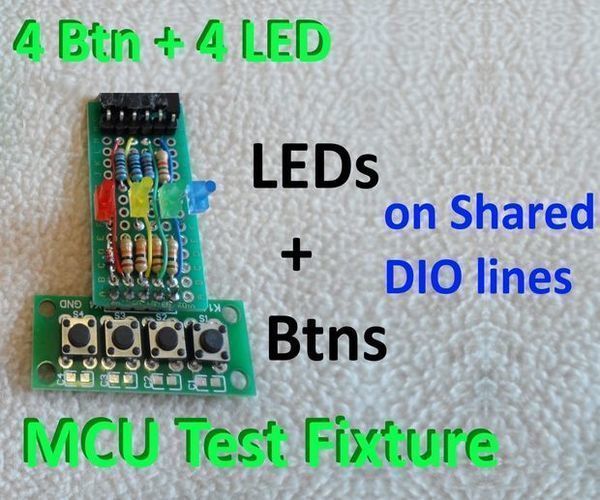
Test Any MCU Using Only 4 I/O Lines
"MCU I/O and Performance Test with 4Btns & 4 LEDs using 5 Lines only. Test virtually any MCU with as little as 4 digital I/O lines (even only 2 all be it tricky) for project suitability and performance. When I start a new project I don't like hooking up a lot of wires before making any progress on what I actually want to focus on. So I built a 4 buttons and 4 LED fixture, utilizing only 4 or 5 DIO lines, which could quickly be hooked up to any MCU. I built a couple of versions, using a few different combinations of various types of buttons and LEDs I had on hand. See ..." [...]

Arduino CNC Drawing Machine (or the Road to Success)
"This project is based on mostly items which are easy to find. The idea is to take two unused computer disk units and combine them to create an automated drawing machine which resembles a CNC machine. The pieces used out of the drives include the motors and railings from both of the drives and the plastic assembly of at least one of the drives (including tray)" [...]
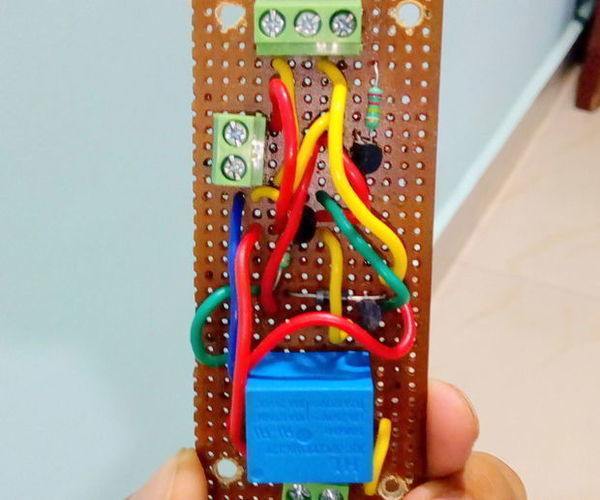
Automatic Water Level Controller Using Transistors or 555 Timer IC
"Introduction: Hii Everyone here we are going to learn about Saving the water efficiently. so go through the steps and the Sentences carefully. Water tank overflow is a common problem which leads to the wastage of water. Though there are many solutions to it like ball valves which automatically stop the water flow once the tank gets full. The water level controller circuit is a simple mechanism to detect and control the level of water in the overhead tank and also in the other containers. Nowadays, all the householders/owners are storing the water in overhead tanks by using the pumps." [...]
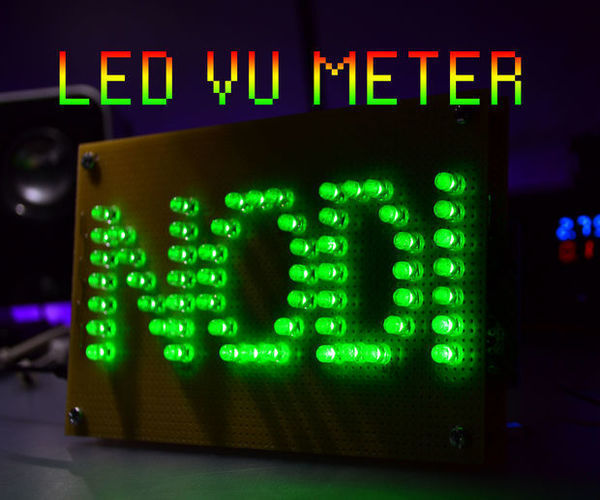
Led VU Meter
"I like homemade gifts and if I have enough time for it, I'll surely grab the opportunity to make one for someone. I was a bit uninspired for this one so I started looking online and got a few ideas and this is what I came up with. So essentially what I made is a LED sign that turns on it rows of LEDs according to the amplitude of the audio signal being put into it, or the audio signal that its built-in microphone is picking up. I think it's very effective for its simplicity since all we are doing is amplifying the input signal, comparing it to some threshold values(both done with op-amps) and switching the rows accordingly with some transistors. " [...]
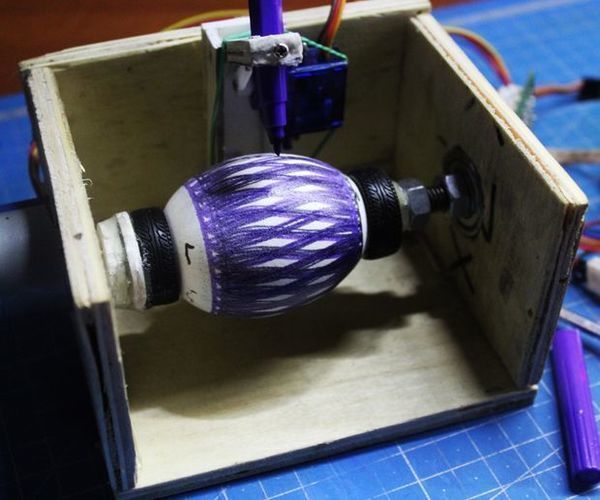
Cheap and Simple Arduino Eggbot
"In this Instructables I want to show how to make a simple and cheap arduino plotter that can draw on eggs or other spherical objects. In addition, soon Easter and this homemade will be very handy" [...]
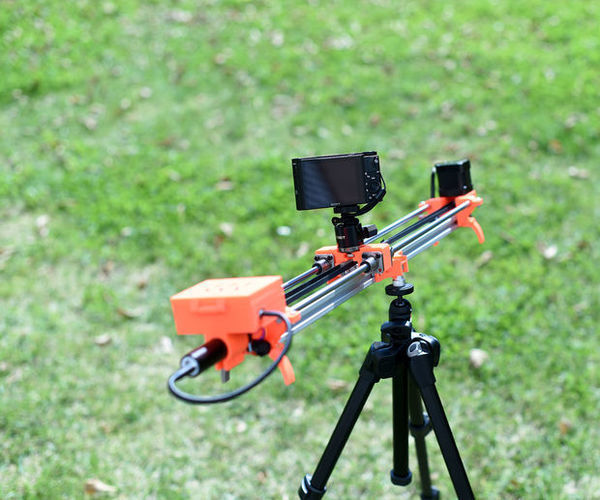
DIY Motorized Camera Slider
"While documenting some projects at work, we needed a camera slider. Being Makers (and after finding out that motorized sliders are quite expensive) we took the opportunity and designed one by ourself! So, if you need a motorized camera slider to create incredible dolly shots for your videos but you are on a low budget, then we will show you how to make a low cost one by yourself too! By the way, if you like to see what we design, have a look at lumi.industries to see some awesome 3D Printers and Holographic Visualizers, all designed and produced by us! " [...]
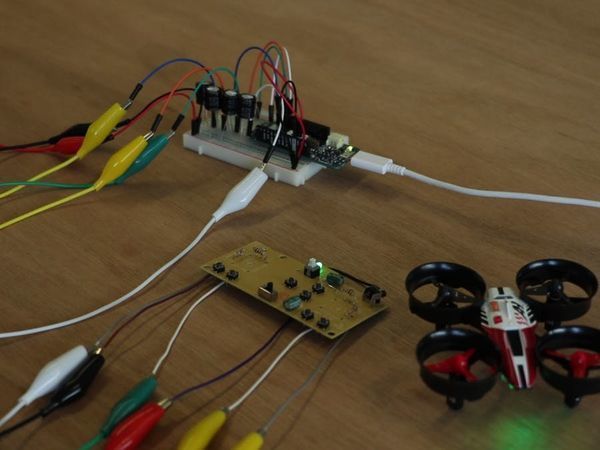
Mind Control Drone
"Learn how to lift-off a drone with your mind and a hacked controller using a MindWave sensor, Arduino MKR1000 and Processing. Background I find drones fascinating, those little flying machines that can do about anything. When I got the opportunity to do a project with cool technology I decided to make a boy's dream come true, controlling a drone with your mind. In the research ,I did for this project I didn't find any tutorials that covers how you can hack a drone controller easily. Most of the tutorials available are about how you can create your own drone using an Arduino or how to hack the transmission protocol. This tutorial covers the most basic concept of hacking a PCB to control it digitally." [...]

HD Engine With Arduino
"Today, we are going to perform an assembly with the HD engine, which I consider to be an engineering masterpiece. We're going to pick up an HD, that is, a hard drive, disassemble this device and take out the engine. In this specific case, I dismounted an old HD, which was broken. It had about 40 gb and was used for about fifteen years, but the engine is still perfect. I consider this HD engine to be very special. It fits into the BLDC (Brush-Less Direct Current) type, meaning it has no brushes." [...]
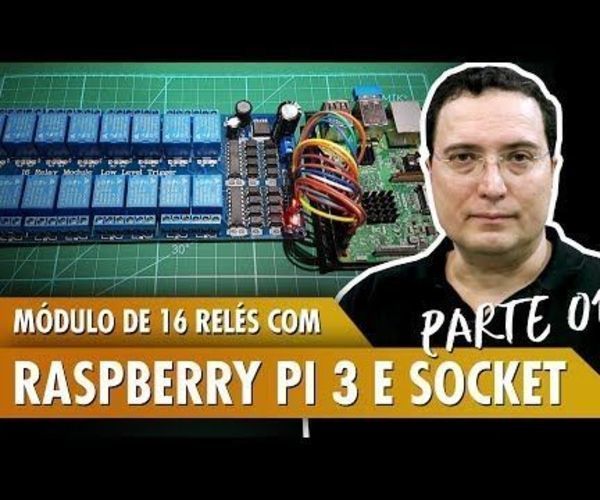
16 Relay Module With Raspberry Pi 3 Using Socket
"Today, we are going to talk about Raspberry Pi 3, which is actually an enormous microcomputer due to its Quad core processor that comes with plenty of memory and a Linux operating system. In this project, which consists of a 16 relay module with Socket, my goal here is to start automation with Raspberry PI, introduce socket and Layer concepts, program in C Unix / Linux, show a client-server, and use Lib WiringPI functions. " [...]
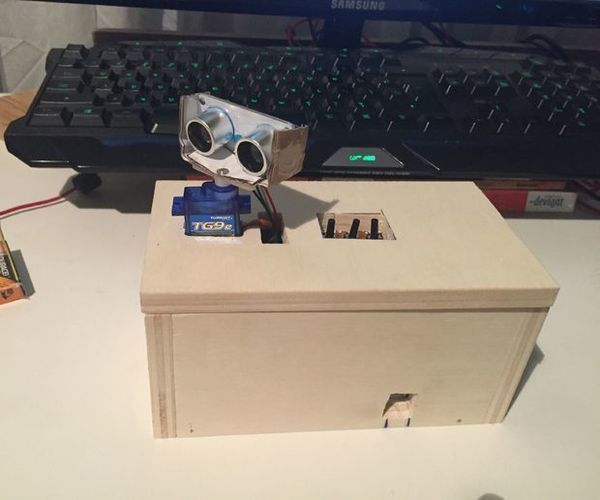
Sonar Alarm
"This is a small project that took a suprising amount of time to put together but here it is. I will not go into detail on how to make it look just as you in the picture, because i simply cant be botherd to do so. Its just a wooden box with holes where i put the arduino in. What can you espect?? If you follow this tutorial you will have a sonar detector that will light an led when you get too close, and a rotor where you can place the sonar ontop to move it left or right with the buttons. You can also press the third button to let the rotor spin 180 degrees." [...]
Pixel Art LED Frame With Free Bluetooth Apps
"Materials 32x16 LED Matrix- Adafruit $24.99 PIXEL Maker's Kit- Seeedstudio $59 (Note I am the creator of the PIXEL Maker's Kit) iOS Bluetooth app or Android Bluetooth App - Free 1/8" acrylic material for laser cutting 12x20 - $15 3/16" acrylic material for laser cutting 12x20 - $20 5V, 2A Switching Power Supply - Adafruit $7.95 (4) Aluminum Female Threaded Hex Standoff, 6mm Hex, 13mm Long, M3 x 0.50 mm Thread - McMaster Carr $2.08 (10) Black-Oxide Alloy Steel Socket Head Screw, M3 x 0.5 mm Thread, 8 mm Long - McMaster-Carr $6.78 (box of 100) (4) Black-Oxide Alloy Steel Socket Head Screw, M3 x 0.5 mm Thread, 25 mm Long - McMaster-Carr McMaster-Carr $12.28 (box of 100) Optional Components if using battery power Rechargeable 5V Lipo USB Boost @ 1A - Adafruit $19.99 2500 mAH LiPO battery - Adafruit $14.99 DC Barrel Jack - Adafruit .$.95 (8) plastic screw and nuts for mounting PCBs Hook up wire SD card to microSD card adapter Optional if using button 10K resistor Push Button Grove connector You can build this project with or without battery power. The project is easiest without battery power and will require no soldering but if you need battery power, then you'll need to be able to solder for this project too. " [...]
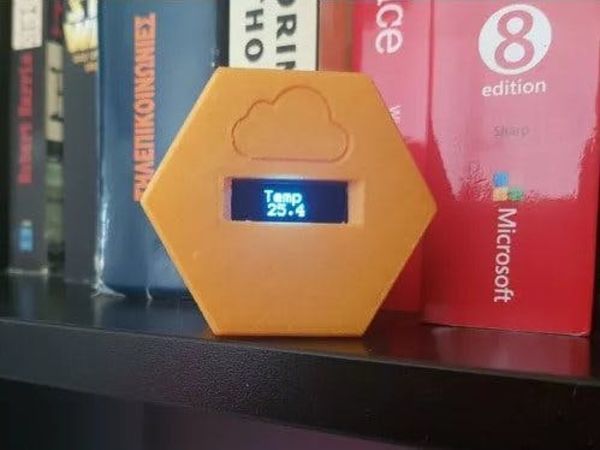
Room Temperature Widget
"A very simple and easy to make thermometer for your room. Not that much to it but it looks cool. A small and good looking digital thermometer using the Dallas DS18B20 digital sensor and an Arduino Pro Micro at 3.3v. Everything is designed to fit exactly and to snap in place, no screws or glue needed! Instructions can be found below, including some information on the parts I used and the Arduino code needed for it to work. Arduino Nano version has also been posted as STL files there are a few connection changes that I will post below." [...]
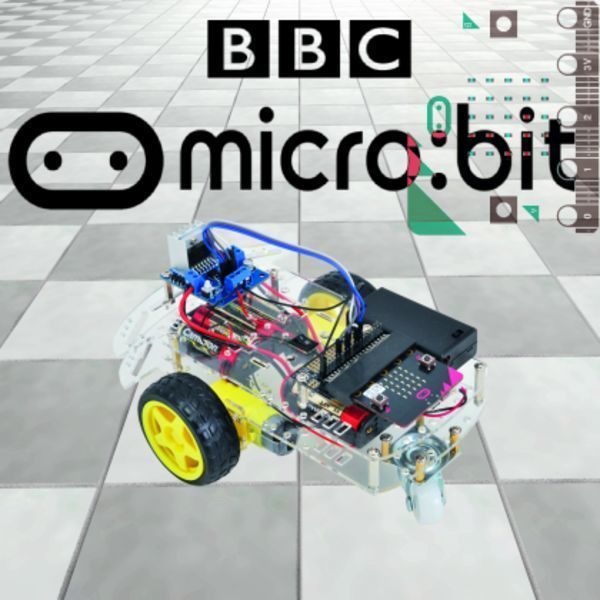
Create your robot with Micro:bit
"It is a newborn board, but it is rapidly growing in popularity thanks to the potential we are going to show you through the project of a robot on wheel that can be controlled by a smartphone via Bluetooth. micro:bit is a small but solid and powerful prototyping board designed by no other than BBC (the English broadcaster), that can be easily programmed from a personal computer; besides the microcontroller which represents its core, it has onboard sensors such as accelerometer, compass and a small “display” composed of a 5 x 5 LED matrix. The small board has built-in 2.4 GHz wireless Bluetooth LE connectivity, implemented thanks to a dedicated transceiver and a proprietary protocol, besides an antenna integrated into the PCB. By combining the ease of use of micro:bit and a motor controller, in this article we are going to show you how to create a robot on wheels that can be controlled through an application from your smartphone using the onboard low-energy Bluetooth link. For a start, we must mention the origins and structure of micro:bit. The micro:bit project micro:bit (http://microbit.org/) is the mind child of BBC, promoter and coordinator (with the nonprofit goal to provide kids and students with a platform to easily learn the basics of programming…), and it is also supported by several partner companies, each providing a portion of the onboard components; among these companies we can find ARM (providing the processor and owner of the known architecture), Freescale (providing the sensors), Nordic Semiconductor (providing the transceiver and Bluetooth controller), Samsung and others." [...]

Arduino MEGA 2560 with WIFI built-in - ESP8266
"Picture of Arduino MEGA 2560 With WiFi Built-in - ESP8266 In today's text, we discuss an Arduino that I consider extremely special, as it has an ESP8266 embedded in its board. It doesn’t have the ESP12 soldered onto the board. Instead, it has the Espressif chip. So, on the board you have the built-in Tensilica chip with 4MB of memory, along with the ATmega2560, which is the traditional Arduino Mega. Let’s move onto how this Arduino works, and let's do an assembly that shows when you should select ESP or Mega to perform a home automation. With this, we can turn lamps on and off, which is a mechanism that can be very useful for you to make improvements in your house." [...]
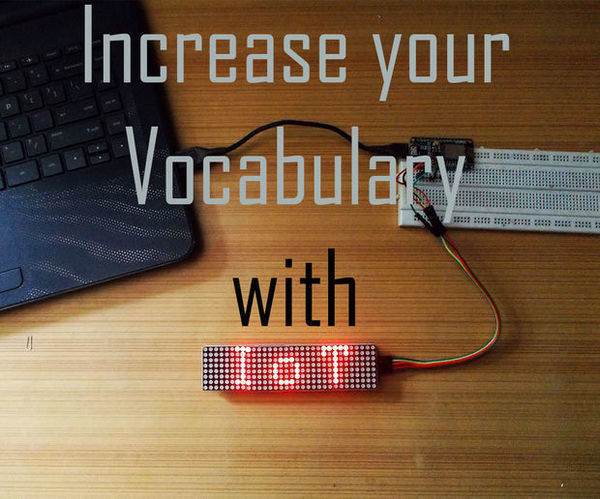
Word of the Day Display With IoT
"In this Instructable, I'll show you how you can build a "Word of the Day Display" using NodeMCU Wi-Fi module and a Dot Matrix Display. Instead of word of the day, you can display anything you want (text) from the whole internet, after going through this tutorial. If this is your first time using a Wi-Fi module, then also this tutorial will hep you, as I have covered from the start all the way to the end. " [...]

Dashboard Keyboard With LCD Display and Arduino Uno
"This is a matrix keyboard running along with an LCD display and an Arduino Uno, the most basic that exists today. The purpose of this setup is to create a program that receives a password typed on the matrix keyboard, compares it with the correct password, and displays a confirmation message on the display. It is important to remember that both the matrix keyboard and this display work with ESP8266 and ESP32. As you can see, we power the circuit with the Arduino with a USB, since we are not using an external source. Eight wires connected in a very simple way to the Arduinos ports make the connection of our keyboard. This keyboard has no power and is passive, which greatly facilitates the connections." [...]
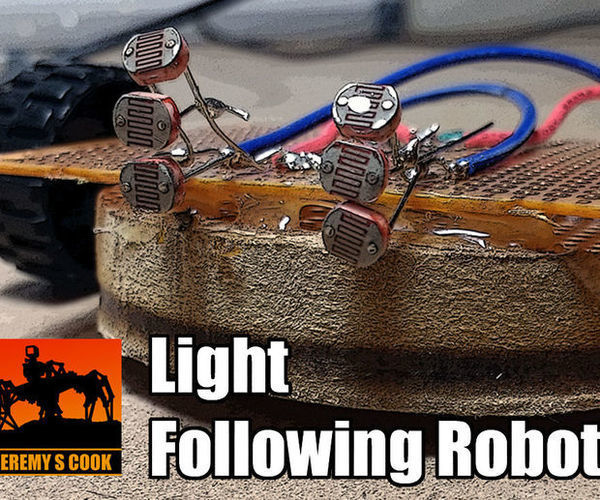
Light Following Robot
"This instructible will show you how to make a light following "robot" using only a couple batteries, light dependent resistors, and a pair of motors. Robot is a bit of an exaggeration, as this is quite a simple beast, but it reacts to stimuli, so that's close enough! Video of the process can be found here, and I'll embed it at the end of the tutorial as well. " [...]

Arduino Tutorial: JARVIS v1 | How to make a Home Automation
"This project demonstrates the use of different technologies and their integration to build an intelligent system which will interact with a human and support in their day to day tasks. " [...]

Fizzle Loop Synth - 555 Timer
"The fizzle loop synth came into being after mashing a couple of simple 555 projects together to make one. At the heart of the fizzle loop is a Vactrol a simple little part that is made from an LED and a photo resister such as a CdS. Calling this a synth might be pushing it a little - it's more a sophisticated noise maker but it's still a lot of fun to use and play with. The first 555 project controls a flashing LED and the second utilizes a photo resistor to change the pitch. There are multiple ways to control the sound from the synth and Im sure that you could easily add a whole bunch more if you wanted to. So what does it sound like?" [...]
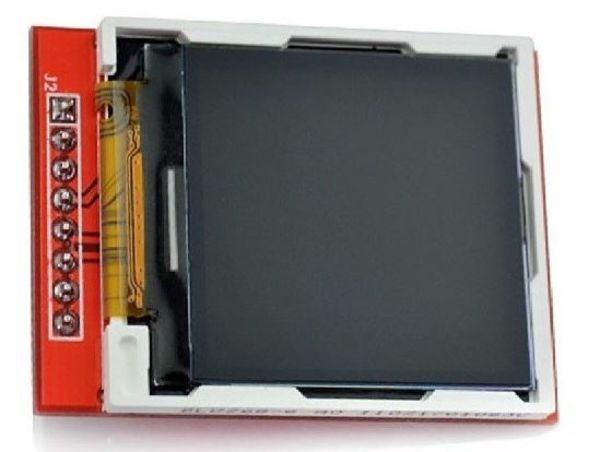
Using the 1.44″ Color TFT display (ILI9163C) with Arduino
"The ILI9163C based 1.44″ colored TFT Display, is a SPI protocol based display with a resolution of 128 x 128 pixels. It’s capable of displaying up to 262,000 different colors. The module can be said to be a sibling to the 1.8″ TFT display, except for the fact that it is much faster and has a better, overall cost to performance ratio when compared with the 1.8″ TFT display. Some of the features of the display are listed below; Size: 1.44 inch Interface: SPI Resolution: 128*128 pixel Visual area: 1:1 square TFT color screen, the effect is far better than other small CSTN screen Drive IC: ILI9163 Fully compatible and alternative 5110 interface Onboard LDO, support 5V/3.3V input voltage, the LED backlight, 3.3V input For this tutorial, we will focus on demonstrating how to use this display with Arduino to display texts, shapes and Images. " [...]
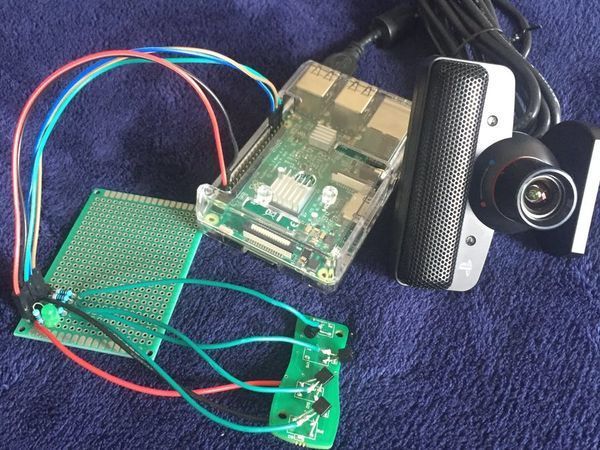
Control Your Car with Alexa
"Add voice control to your car using Raspberry Pi and Amazon Alexa. Nowadays more and more devices can be controlled by voice using services like Google Home and Amazon Alexa. I’ve decided to bring myself up to speed by taking Alexa course at codecademy and adding voice control to my 2006 Infiniti G35 seemed like a good way to test out what I’ve learned. In this tutorial we’ll solder onto your car’s remote so the things you can control are going to be limited to the remote’s capabilities(for now). In order to complete this project you’ll need to have some experience with soldering iron, Raspberry Pi(RPi), Amazon Alexa, AWS Lambda, Javascript/NodeJS/NodePackageManager and basic understanding of electrical circuits or willingness to learn as you go. I’m still a beginner myself and I’m sure there is a better/cleaner way to do this so any feedback is welcomed." [...]

Self-learning Chaotic Robot
"Are you interested in machine learning, AI och robots? You don't need to work at some fancy university. This is is a description of my chaotic robot. It is a very simple robot to demonstrate how to use self learning code and how to implement it into a arduino platform, in this case an Arduino due. It is a very cheap platform! The code evolves the robot so that the robot learns to crawl." [...]

Control Your ESP8266 From the Internet? Free and Easy
"How many times have we not looked for a simple way to communicate with our devices through the Internet without complications and / or complex intermediary applications, DNS, IP addresses or VPN's. Many times I have been asked how to turn on a led, relay or view a temperature from the Internet in an easy way, here a possible answer. For a long time I had in mind this application to control or interact an ESP8266 from the Internet using the existing IRC servers, it only requires 3 things an available IRC server, nickname and channel. " [...]
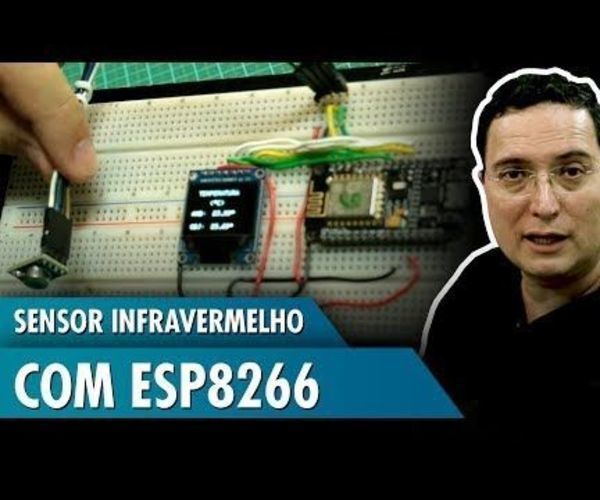
Infrared Sensor With ESP8266
"Our objective this time is to create a program that will read the ambient temperature of any object pointing toward our sensor. To do this, we will use in this project an ESP8266 nodeMCU, an MLX90614 infrared sensor, and an OLED 96 "display, which will display the temperature data. " [...]

ESP32 OBD-II Emulator
"Open-source OBD-II emulator based on an ESP32 + CAN transceiver IC, controllable via WiFi through a simple web UI (or via API). " [...]
NeoPixel Manicure
"This project is great for cosplay and looks amazing both in person and in photos. Soldering wires to the tiny NeoPixel LEDs is definitely challenging, but with a magnifying glass and some patience, it's doable. This build is inspired by the music video for Spring of Life by my favorite J-pop group, Perfume. In the video, directed by amazing media artist Daito Manabe, the singers have LEDs mounted to their nails with white wires gracefully falling from each finger. Originally, I recreated this look with SMT LEDs in just one color. In this guide, we'll take it to the next level with NeoPixels!" [...]

Multimedia Desktop Controller
"No Multimediakeys on your Keyboard? In this Instructable you will learn how to build your own Controller for Multimedia shortcuts! Volume controll, play, pause, previous or next; all combined into one little accessory for your Desktop. " [...]
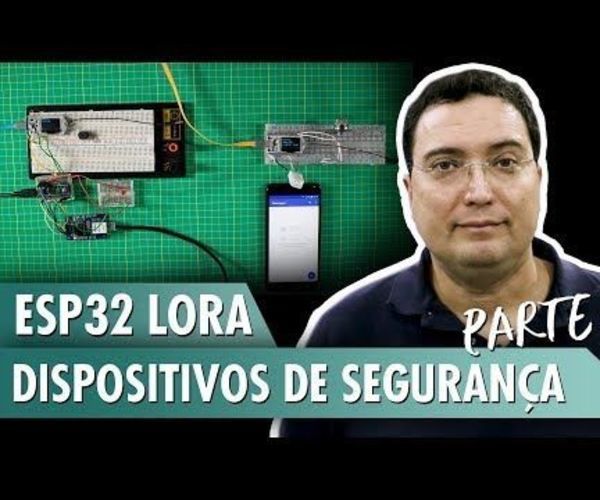
ESP32 LORA: Gas Sensor, Moisture, and Temperature by SMS
"Sensors, with an ESP32 LORA, can be easily designed for safety purposes involving gas, temperature, and humidity. Today, Im going to show you precisely how to use this microcontroller module as a Sender and Receiver. Also, I'll show you how to use an Arduino Nano with an Ethernet module, and communicate over the Network. Considering that this subject is extensive, I promise to create a second article concerning this subject for next week, as well as a new video. In this project, we have a simple assembly, which will work as an alarm to send SMS messages to your smartphone if problems arise. To do so, we will first employ a gas sensor module, MQ2, and the temperature and humidity sensor DHT22 (AM2302)." [...]
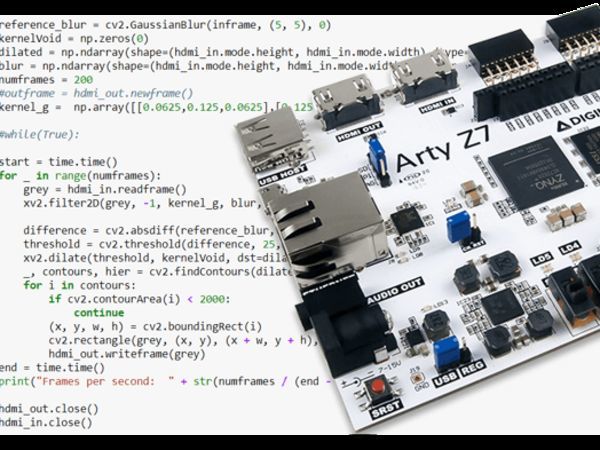
Use Python, Zynq and OpenCV to Implement Computer Vision
"Use Python, OpenCV libraries and the PYNQ frame to implement the computer vision on Arty Z7-20 Xilinx Zynq SoC platform. In this example, users can understand how to use OpenCV to create a simple tracking example which tracks and identifies differences between frames. We are going to need to use Arty Z7-20 loaded with PYNQ image. You can learn how to do this through "Programming Python on Zynq FPGA" In addition, the following parts are required. - Logitech 720P USB web camera - HDMI Camera e.g. the Apeman 1080P action camera - Associated cables for HDMI In and Out ports" [...]
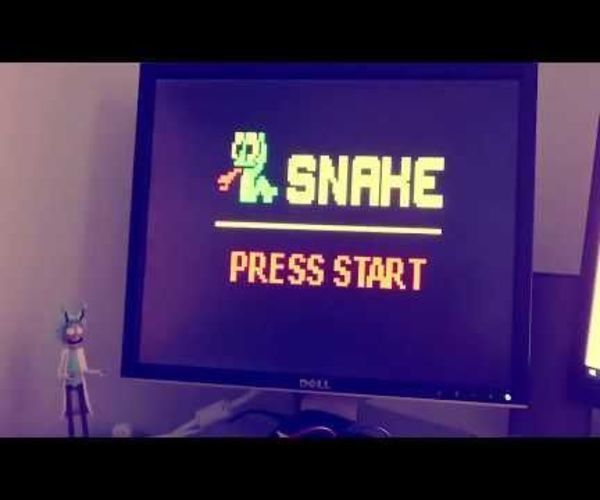
Arduino Snake on a VGA Monitor
"Well... I bought an Arduino. Initially, the investment was motivated with something that would make my daughter interested in programming. However, as it turned out, this thing was more fun to play with for me.After playing around with making LED's light up, button interaction and serial printing, I decided to set raise the bar a bit and actually make something. As one of my biggest interests is gaming it was naturally going to be something gaming-related, and therefore I decided to create my own little arcade machine. I quickly realized that the actual cabinet-building had to be a future project, and that I needed to focus on wrapping my head around programming with the limited resources that Arduino has to offer." [...]

WHAT ENGINE IS THAT? - Step Motor Laboratory
"What motor is this? Have you ever asked yourself that question? Well, today we are going to address the electrical characteristics of an engine. Were doing this because scrap robotics often involves some frustration, and my intention, therefore, is to prevent possible frustrations by setting up a STEP ENGINE LAB. Therefore, we will introduce the Multitask programming in ESP32, calculate voltage values and currents, and test several types of step motors. " [...]
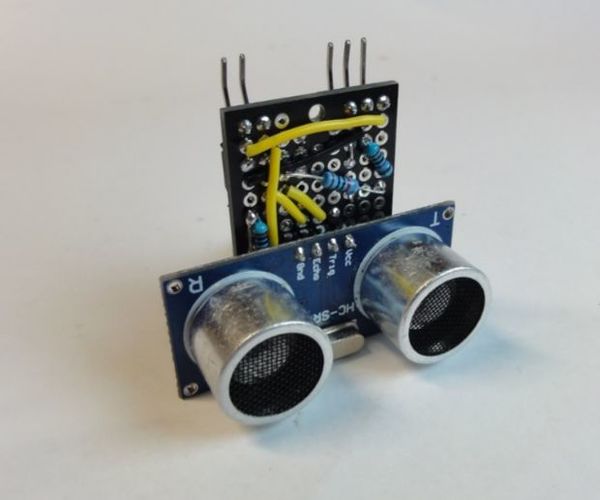
Iot123 - Sr04 Distance Trigger Brick
"In developing an OLED ID Tag, I needed to make my design as energy efficient as possible. One approach was to only display the tag if there was someone nearby (think ComiCon or Exhibition booths). The sensors themselves can draw a lot of current, so this needed to be optimized. Originally I started with a Sharp IR sensor, but bricked my only one during a development spike. I believe there are many scenarios where low power sensing is required, so I made the design fairly generic where the hardware sensor and the associated code could be swapped out easily. Also serial pins (TX/RX) have been broken out so as to debug the ATTINY85 during development." [...]
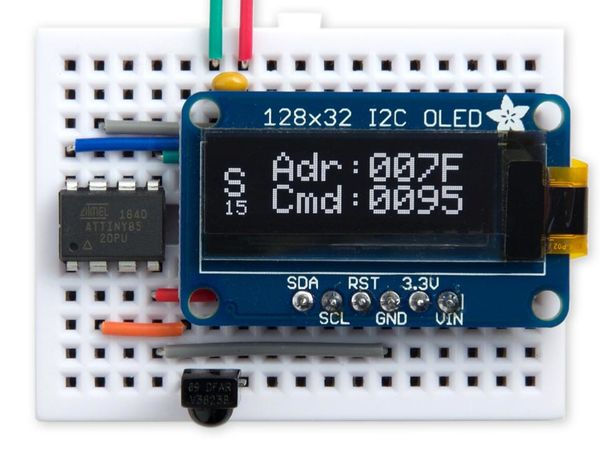
RR Remote Control Detective
"The IR Remote Control Detective decodes the signal from several common types of infrared remote control, such as audio, TV, and hobbyist remote controls. To use it you point a remote control at the receiver and press a key; it will then identify the protocol, and display the address and command corresponding to the key: It's based on an ATtiny85, an infrared receiver, and a 128x32 I2C OLED display. I originally built it to help design a project based on an IR remote control. It will be useful if you're trying to automate the control of an existing domestic device using its infrared remote control codes, or you want to make a device you can control with an existing remote control. Once you've used the IR Remote Control Detective to find out what codes your remote control generates you could use it to control your own project using the receive routine in this program. You could also build a replacement remote control to control your equipment using the transmit routines in my earlier articles: IR Remote Control Tool, IR Remote Control Tool (NEC), or Sony NEX/Alpha Remote Control." [...]
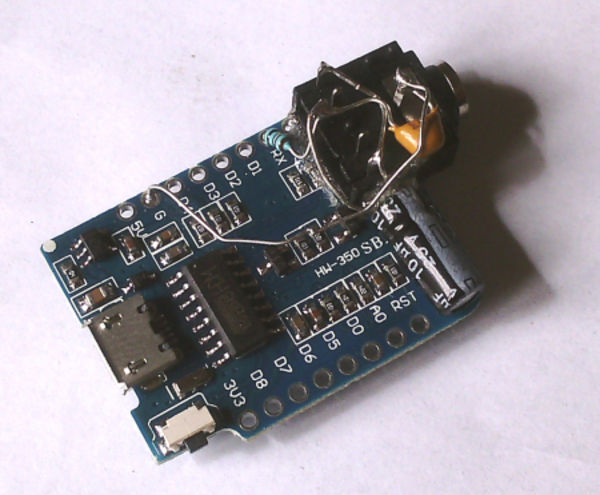
Audio Hacking with the esp8266
"The esp8266 is quite powerful for audio applications with a CPU frequency of 160MHz and 4MB flash and easily outperforms the Volca Sample with a WiFi/Web GUI. The goal for this blog series is to build synthesizers on the esp8266 platform so we will also go through adding MIDI, Sync24 and trigger inputs. And use the WiFi for easy uploading and editing of samples. But the PDM DAC also works for webradio and other audio streaming applications. We will use the Wemos D1 Mini board with the Arduino IDE and all the source will be available. " [...]

DIY Powerful Induction Heater
"Induction heaters are definitely one of the most efficient way of heating metal objects specially ferrous metals. The best part about this induction heater is that you dont need to have a physical contact with the object to be heated. There are a lot of induction heater kits available online but if you want to learn the basics of induction heating and want to built one that looks and performs exactly like a high end one then keep going through this instructable as I will show you how an induction heater works and where you can source your material to built one for yourself that looks like a professional one. " [...]

Custom Macro Mechanical Keypad
"In this Instructable I will be taking you through the basics of creating your own 6 keyed macropad, controlled by an Arduino. I will be taking you through what you need, how to assemble it, how to program it, and how to improve it or make it your own. After much research, I couldn't really find a great guide on how to make a macro keypad, or a hand wired keyboard in general. So I decided to do it myself, in the simplest way possible, without diodes, resistors, or anything else. I also wanted to have a unique modular keyboard, where I could grab any parts that I needed, this is the first of many other parts. This module's inspiration was from arrow keys on a keyboard, being able to fit it in your pocket, and taking it anywhere if you needed a few extra buttons on the go." [...]
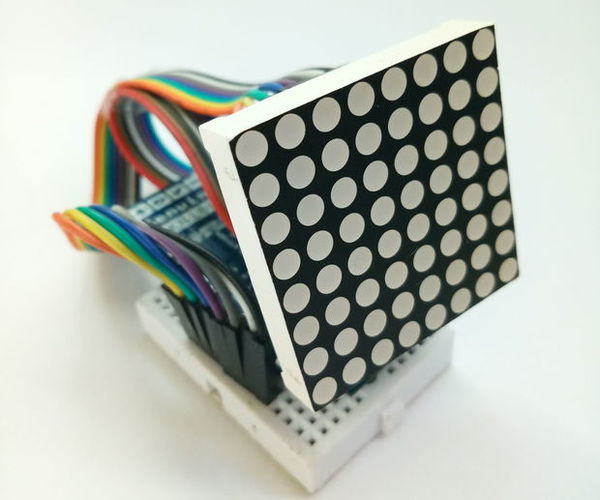
How to Make a Mini Weather Status Display
"About the projectMicrocontroller can be fun and entertaining at the same time, add some internet connectivity for real Internet of things ! Allow me to show you how I did manage to create a mini weather status display using 8x8 matrix display and a cute but power full MKR1000. I will be using Genuino MKR1000 to fetch temperature, humidity and condition of weather within a selected location. Show status to display in an slide animation pattern. ChallengesUtilize the power of your microcontroller and level up for real Internet of Things! Since 8x8 Matrix is basically an array of LEDs, I will need to program it to show text and animation effects On this project you will also learn how to consume rest web service api how to fully utilize the power of your microcontrollerutilize internet connection for IOThow to parse Json data how to use Threads and Wifi libraries in Arduino" [...]
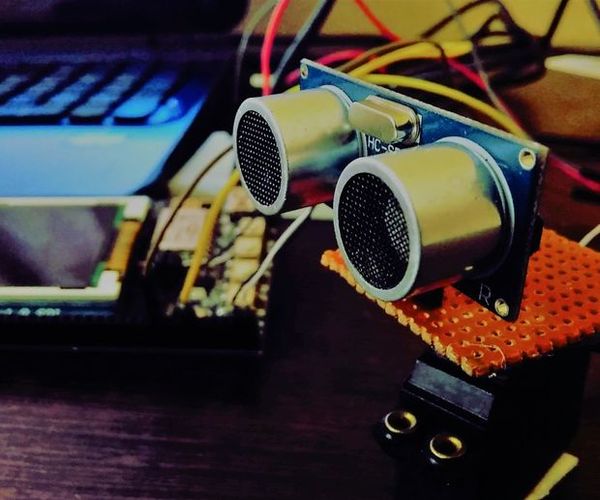
Arduino and Ultrasonic Sensor Based Radar on SLabs-32 IOT Board
"Well, you might have seen this awesone Ultrasonic based RADAR system being done many times by the community of hobbyists in the past. Here I am not trying to claim the first rights for the RADAR system based on ultrasonic sensor and Arduino, but want to show you how good and useful this new IOT board SLabs-32 is for prototyping!! " [...]
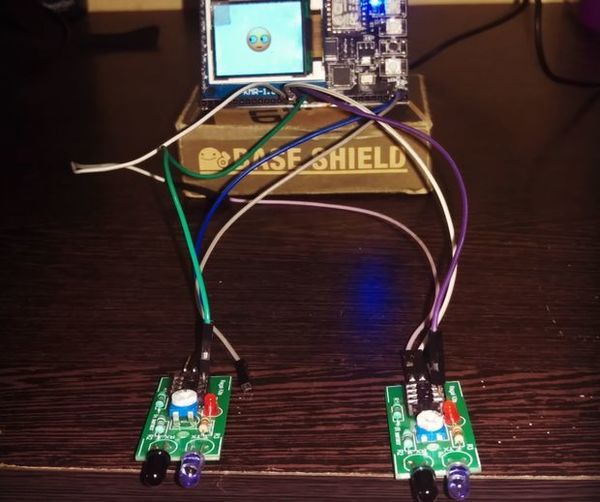
Simple Gesture Control Using IR Sensors
"Controlling things using gesture is always exciting and fun but, with the sensors available in the market for recognizing gestures are pretty costly. So how can we make a simple gesture control using few dollars? Well, IR sensors when used properly can be used to recognize simple gestures. Using 2 IR sensors we can make it recognize four kinds of gestures, which are left swipe, right swipe, waving your hand and moving your hand forward and backwards. We will make this project using SLabs-32. It has an onboard TFT screen which we can make use of by displaying images when a particular gesture is recognized." [...]
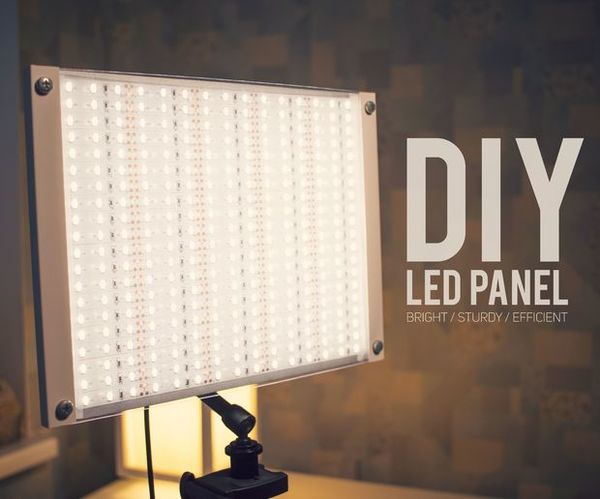
Super Bright / Variable Brightness LED PANEL
"In this Instructable I am going to show you how to make super bright, very sturdy, properly cooled, variable brightness, accurate color producing LED PANEL for photography, video work or any general lighting. This LED panel's design focuses on the lighting quality, durability of the panel and the LED strips longevity. " [...]

LED Ring From Recycled Bike Rim
"Inspired by Loek Vellkoops Instructable, I recently chopped up a scrap kids bike to see all the materials I could reuse from it. One of the elements that really struck me was the wheel rim after I had taken all the spokes out. Solid, made from steel, and perforated with precisely spaced holes, I thought it would be cool to light it up with LEDs as an accent lamp, or just something cool to trip out on. So, thats what I did, and Im proud to say that I whipped it together in an afternoon while my family was out shopping. " [...]
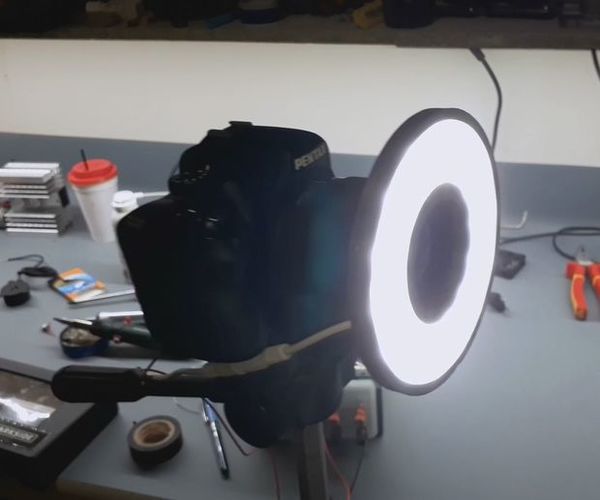
3dPrinted Ring Light
"Build a nice and easy ring light for your dslr camera. " [...]
That's all Folks!


